Susan Ensor
Software Engineer Oversees MESSENGER Science Operations

Susan Ensor with her father, Phil, circa 1986.
From the seven instruments and the radio science experiment on the MESSENGER spacecraft, hundreds of thousands of images, millions of spectra, and many other types of data have been collected, and the more than 10 terabytes of science products created from those data will be analyzed for decades. The mission’s Science Operations Center (SOC) enabled the team to collect and catalogue the data, and for the last eight years Susan Ensor has led the center’s efforts.
Ensor, a computer scientist at the Johns Hopkins University Applied Physics Laboratory (APL) in Laurel, Md., for nearly 30 years, didn’t come from a family of scientists. Her parents both grew up in rural Illinois, where her mother attended a one-room school through eighth grade and later became the valedictorian of her college class. Her parents met when her father participated in a donkey basketball game – literally, a basketball game in which players compete on donkey-back – at the high school where her mother taught. Her father was Goodyear Corporate Director of Organizational Development, and both “were always extremely supportive of my education and career, with my father encouraging me to do something significant and non-traditional.”
Her father, Phil Ensor, coined the term “functional silo syndrome” in the late 1980s, generating considerable discussion then and since around the structure and culture of business organizations. “His use of the term ‘silo’ reflected his rural Illinois origins and the many grain silos he would pass on return visits as he contemplated the challenges of the modern organizations with which he worked,” Ensor notes. “Those trips and the experiences on my maternal grandparents’ farm were a big part of my childhood.”
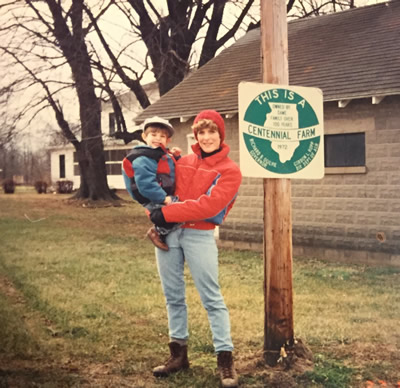
Susan Ensor with her son, Alex, then 3 years old.
She attended Ohio State University with an eye toward studying math and ended up in an honors program that conferred a bachelor’s degree in interdisciplinary studies. When the opportunity arose to complete a dual master’s degree program in math and computer science, she eagerly enlisted.
One of her earliest assignments at APL was designing and implementing the flight software for the spectrometer processor for the Hopkins Ultraviolet Telescope (HUT) that flew on the Astro-1 and Astro-2 shuttle payload missions. She recalls performing the final testing of the software, alone in an APL lab, with one eye on a small black-and-white television. It was January 28, 1986, and the NASA Space Shuttle orbiter, Challenger, was launching. She watched in horror as — 73 seconds into its flight — the shuttle broke apart, leading to the deaths of the five astronauts and two payload specialists aboard.
“Equally horrifying was the realization that with HUT originally scheduled for the next shuttle launch after Challenger, how near we came to losing our own payload specialist, Sam Durrance,” Ensor said.
After HUT, she worked in a variety of capacities — software requirements developer and implementer, software lead, test lead, mission system software engineer — on the NEAR, TIMED, CONTOUR, STEREO, and New Horizons missions. “One high point among many was being summoned to patch the X-Ray/Gamma-Ray Spectrometer flight software on the NEAR spacecraft so that it could collect gamma-ray data from the surface of Eros after the first landing on an asteroid,” she said.
MESSENGER has been Ensor’s longest-duration assignment, starting with her role as lead for the team developing the MESSENGER instrument flight and ground software for nearly four years and several years later followed by her role as the SOC lead.
The SOC supports data management and analysis, receiving science-related telemetry, reformatting and cataloging this telemetry and related ancillary information, retaining the science data for use by the MESSENGER Science Team, and preparing data archives for delivery to NASA’s Planetary Data System (PDS) archive, as well as providing assistance to the instrument and science teams in visualizing their data, executing their algorithms, and generating higher-level data products.

Susan Ensor at her piano at home.
“I loved the challenge and camaraderie of contributing to both the critical flight systems on the MESSENGER spacecraft and the important science operations infrastructure and tools for delivering the science data to the team and the PDS, for which the final delivery of data is now being prepared for release in May 2016,” she said. “It couldn’t have been more exciting for me than to first contribute to the instruments required to capture the science data and finish by contributing to making those data available to the MESSENGER team and the world.”
One of the more memorable MESSENGER moments for her was at the time of the first MESSENGER flyby of Mercury in January 2008. “Standing around a computer monitor in the Science Operations Center in the presence of Robert Strom (who had been part of the Mariner 10 mission to Mercury more than 30 years earlier) and other team members, witnessing the first image from the side of Mercury previously unseen by human eyes, and feeling the deep awe and appreciation of those present for that sight … these moments were incomparable.”
Ensor said these assignments and the chance to work with many talented professionals have been extremely gratifying. “I have been very fortunate in the opportunities I have been given, and my advice to young people is to be open to new and different challenges, as they can be growth opportunities and career building.”
While not at work, Ensor enjoys music, art, cooking, the outdoors, and the success of her 26-year old son — a biochemist pursuing a career in Washington, D.C. She greatly valued being a stay-at-home mom to him for the first five and one half years of his life. For the last seven years, she has also managed the Illinois farm that has been in her family for nearly 150 years and is still operational.
Although likening her mix of activities to reaching for the stars with her feet firmly planted on the ground may be a stretch, Ensor said she feels that what she has taken on has been well worth the effort.
Andy Calloway
MESSENGER Mission Operations Manager Reflects on Ten Years in Space
In “The Mystery of Firefly Field,” written by Andy Calloway, a young boy learns about the night sky to save a host of fireflies before new construction and light pollution signal their end. In the story, the boy saves the day (and the fireflies); but Calloway's vast knowledge of the night sky notwithstanding, there is no saving MESSENGER, a spacecraft that he's helped operate for the last decade. On April 30, the Mercury orbiter will impact the planet at about 8,750 miles per hour, creating a crater as wide as 52 feet.
A veteran member of the MESSENGER mission team for 13 years, Calloway has served for the last eight as the Mission Operations Manager, or more affectionately as “MOM.” Calloway explained, “It will be a bit surreal for the team on that final orbit when we no longer receive the signal from our intrepid spacecraft. MESSENGER has been dutifully collecting data all these years in one of the most challenging thermal and space weather environments of the entire Solar System. On that final orbit, the probe will travel behind the planet from Earth’s perspective, as it has hundreds of times before, but unlike those times it will never re-emerge from the opposite side. Its signal will still be traveling through space back to Earth, however, after the spacecraft has hit the surface.”
“Mission operations is often considered the hub of a space program, and that’s the best part of serving as MOM. I have the privilege of interacting with so many talented and dedicated people, especially our mission operations team and people representing ground systems, flight systems engineers, project management, the Deep Space Network, scientists and science planners and sequencers, the navigation and mission design teams, and countless others,” he said. “Every day is different, and there are always new obstacles and engineering challenges to overcome, so it is a very rewarding position and career.”
After graduating in 1989 from the Georgia Institute of Technology with a degree in Aerospace Engineering, Calloway wasn’t considering a career in space operations. For one, the aerospace job market was difficult in the wake of the 1986 Challenger tragedy. So he chose to pursue a master’s degree in Space Sciences at the Florida Institute of Technology in Melbourne (where he met his future wife, Alexandra). During that time, Martin Marietta came to campus recruiting flight control candidates for their new communications satellite fleet, an opportunity that included training in East Windsor, N.J., followed by a year in the Pocono Mountains.
Calloway accepted their offer. “I learned a great deal about space operations and spacecraft subsystems in those early years by supporting several launches and early checkout campaigns, including Telstar 401 (on the first launch of an Atlas II-AS rocket), followed by Telstar 402, 402-R, AsiaSat2, EchoStar-1, and others,” he said. “In 1994 I supported the BS-3N communications satellite team in Kimitsu, Japan, for three months. I loved Japan, the culture, and the people, and it was certainly one of the highlights of my early career. After such variety and experience in a relatively short amount of time, I knew then that I wanted to continue in space flight operations as my career of choice.”
In 1996, when Martin Marietta merged with Lockheed and announced plans to close the New Jersey facility in favor of Sunnyvale, Calif., Calloway chose instead to accept an offer to support the Tropical Rainfall Measuring Mission (TRMM) at the NASA Goddard Space Flight Center, a joint mission between NASA and the Japan Aerospace Exploration Agency designed to monitor and study tropical rainfall.
“TRMM provided a great opportunity to enhance my geostationary communications satellite experience with a low-Earth-orbiting mission and Tracking and Data Relay Satellite (TDRS) System communications,” he said. “One mission highlight was the decision to forego a controlled re-entry and boost TRMM’s orbit to prolong the mission, which required working closely with NASA Johnson Space Center on collision avoidance contingencies with the International Space Station and the Space Shuttle.” Ironically, he noted, TRMM science data collection just concluded earlier in April, the same month that MESSENGER will be impacting Mercury.
Calloway joined APL in 2002, continuing his journey from geosynchronous Earth-orbital missions to low-Earth-orbit missions to deep space mission operations with MESSENGER. He started off as the operations lead for command and data handling and instrument operations, then deputy operations manager, and eventually MOM. He has been with the team through launch, a 6.6-year cruise phase that included six planetary flybys, Mercury orbit insertion, and four years of orbit operations.
There have been several memorable moments, he said, such as the first Mercury flyby in over 30 years. “The pinnacle, however, was Mercury orbit insertion on St. Patrick’s Day, 2011,” he said. “We knew that after 6.6 years we were finally beginning our primary mission, and no other team could ever claim to be the first to orbit a spacecraft around Mercury. My son was just eight months old when MESSENGER launched, and he grew up with MESSENGER, as did many other children across the project.”
“We are indeed explorers, as exemplified by those first Mercury flyby images from the previously unseen territory of Mercury,” he continued. “One afternoon during Family Day I observed my young daughter casually spinning the first complete globe of Mercury, something that would not have been possible prior to MESSENGER. I knew then that all the years of hard work and dedication by so many had paid off! What better legacy for my children than to be able to say I contributed to re-writing the textbooks on our Solar System. And who knows, maybe in a hundred years, someone will build a museum on Mercury around MESSENGER.”
When he’s not flying spacecraft around the Solar System, Calloway spends a lot of time with his family – “from swimming to scouting and everything in between.” He is also active within his parish, and he is an avid tennis player, playing in many United States Tennis Association leagues over the years. “I learned to love the game of tennis from my parents,” he said. “As a child I lived for three years in Lima, Peru, where they have real clay courts; and then I grew up in south Florida, where tennis is played year-round. I have pictures of my grandmother playing tennis in the early 1900s and then in her 80s, and I hope to continue that tradition with my own children.”
And what will he do once MESSENGER is gone? “My next goal is to one day be a published children’s book author, having written stories for early readers through middle grade,” he said. “My firefly story was adapted for a local planetarium show last year, and now I’m hooked. And who knows, maybe an upcoming adventure will again involve the planet closest to the Sun.”
Timothy McCoy
Smithsonian Meteorite Expert Helps MESSENGER Team Understand Mercury’s Surface
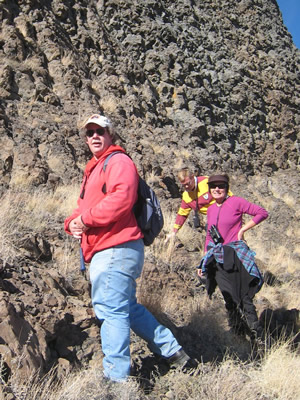
McCoy (left), on a 2010 field trip examining volcanoes in New Mexico as analogs for planetary volcanism.
MESSENGER Participating Scientist Timothy McCoy had always been interested in space, and as a child he dreamed of becoming an astronomer. But ultimately, he said, he found physics to be “too theoretical to be very interesting at the highest levels.”
A geology class at Eastern Illinois University got him interested in rocks. “I loved the idea of being able to hold a rock in your hand and learn its story; that was very satisfying,” he explained. “Knowing that we had rocks from outer space, I took up geology as my major in the middle of my junior year of college.”
He went on to earn an M.S. from the University of New Mexico and a Ph.D. from the University of Hawaii, and received post-doctoral training at the NASA Johnson Space Center before landing at the Smithsonian's National Museum of Natural History, where he’s worked for 18 years, most recently serving as chair of the Department of Mineral Sciences and Curator-in-Charge of the nation’s meteorite collection.
He became involved with the MESSENGER mission in 2007 through its Participating Scientist program. “I had been following MESSENGER since its early development and had an interest in Mercury from a group of meteorites that I worked on years ago,” he said.
He brings to the team extensive experience in using meteorites as a tool to understand the origin and evolution of their parent bodies. “I’ve spent a couple of decades working on meteorites that formed under highly-reduced conditions (under which there is little free oxygen in the rocks), and I help interpret the chemistry, mineralogy, and structure of Mercury in the context of what I know about these conditions.”
He also makes specific predictions about how scientists might expect elements to behave and how they might test those predictions in subsequent observations.
McCoy joined the team in time to be a part of the observations collected during MESSENGER’s historic first flyby of Mercury in January 2008. But things really picked up once the probe entered orbit about Mercury in March 2011, he said.
“For someone primarily interested in geochemistry, nearly all of the really interesting geochemical observations have happened since we’ve been in orbit and had the chance to gather data from the Gamma-Ray Spectrometer, X-Ray Spectrometer, and Neutron Spectrometer,” he said. “We’ve also greatly refined what we know and now understand – that most of our previous models for the formation of Mercury were wrong – and we’ve subsequently been able to explore a whole new set of models.”
One of these discoveries stemmed from experiments McCoy conducted 15 years ago during which he and a team of scientists melted highly-reduced meteorites and produced melts rich in volatiles, with low iron and high magnesium. “We wrote an entire paper about how these experiments might apply to Mercury, but I’m not sure we believed it even when we published the paper,” he said. “As it turns out, those experiments are not a bad match for the surface of Mercury, and we have been reanalyzing those 15-year-old samples to see if we can explain other chemical features we see on Mercury.”
Over the past seven years, there have been many memorable moments from the mission, but he said the one that stands out is when scientists realized that Mercury is enriched in volatile elements such as sodium, potassium, and sulfur.
“We had to throw out most of the existing models and develop new ideas for the formation of Mercury,” he said. “It isn’t often you work on a mission that redefines the history of a planet, but MESSENGER is doing just that, and it is probably one of the few things I’ll do in my career that my grandchildren will actually learn about in school.”
Another defining moment (“in terms of the really geeky stuff,” he said) was realizing that scientists could do targeted observations for geochemistry.
“There is a very small (a few hundred kilometers across) spot on Mercury that formed by explosive volcanism,” he explained. “If we could measure the composition of that deposit, we could learn a great deal about how the volcanism occurred. We realized that if we turned the spacecraft as we passed over the spot, the Sun just might produce a solar flare that would excite X-rays and let us measure the composition.”
As far as he knows, he said, this had never been attempted for geochemical information, although it is commonly done for imaging. “The team put in a lot of hard work, and it actually worked.”
When he’s not studying rocks, McCoy said he spends a lot of time with his family: his wife, Darlene, and two sons, age 12 and 14. He’s involved in the Boy Scouts, he takes a walk every day with Darlene and the family dog, and they grow white corn in northern Virginia.
McCoy is also an active member of the Miami Tribe of Oklahoma, and he combines his passion for geology with his intense exploration of his cultural heritage.
Science and indigenous cultures share many commonalities, he said. “Both are ways of interpreting our world based on direct observations, either over a short period of time to test a specific hypothesis for science, or extended over many generations and passed on through stories for indigenous cultures,” he said. “The overlap is particularly strong for planetary science, where observations are interpreted in the context of place.”
Brett Denevi
Geologist Enjoys a Pas de Deux with the Planets
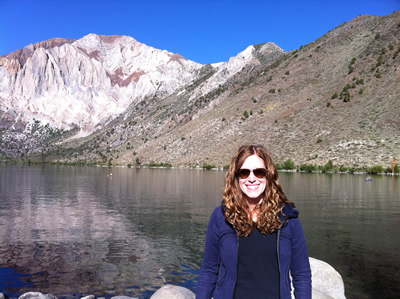
Brett Denevi at Convict Lake in California, studying silicic volcanism with colleagues from the Lunar Reconnaissance Orbiter Camera team.
Brett Denevi, a planetary geologist at the Johns Hopkins Applied Physics Laboratory (APL) in Laurel, Md., says she has always loved space, but initially in an abstract way. “In college I thought about studying physics and astronomy, but when I explained to my physics advisor the vague ideas I had about what I wanted to do, he suggested I talk to people in the geology department.”
She did just that, and she landed a research job helping make image mosaics for the Near Earth Asteroid Rendezvous mission to the asteroid Eros. “I learned about doing planetary geology as a career, and I was set. I loved working on an active mission, and because I had always loved photography, working with image data was perfect. As I started taking geology classes it all came together.”
Denevi, the Deputy Instrument Scientist for the Mercury Dual Imaging System (MDIS) on the MESSENGER spacecraft, became involved with the MESSENGER mission when she was at Arizona State University. “I had just started as a post-doc there shortly before MESSENGER's first flyby of Mercury in January of 2008,” she explains. “I had been working with Mariner 10 images of Mercury, so I was really lucky that the timing worked out so well for me to start working on MESSENGER.”
She started out on the mission as an “unofficial” science team member, working as a post-doc on her own studies, and helping with calibration tasks as needed. Eventually, she was given roles of increasing responsibility.
As the MDIS Deputy, Denevi reviews and plans image sequences to make sure the team is getting the highest quality images and the most important images of Mercury. “We spend a lot of time prioritizing between color versus monochrome, and high resolution versus broad coverage, because there are more opportunities for images than we could possibly ever actually acquire,” she says. She also spends considerable time on image calibration, so that when scientists use the images for their investigations, they can switch from raw data numbers to meaningful values, such as the percent of light the surface is reflecting.
She fills another role on MESSENGER, as the Deputy Chair of the Geology Discipline Group, managing the scientists who focus on Mercury's geology. “There is an administrative component; I help to organize science team meetings, summarize findings from our group, and help move manuscripts along toward publication,” she said. “But as part of the science team I also get to focus on my own science. I'm really interested in the history of volcanism on Mercury, so I map out volcanic deposits and interpret what the role of volcanism was in shaping Mercury's geologic history and crustal evolution.”
In her years on the mission, one of her most memorable moments was from MESSENGER's first flyby of Mercury. “We were waiting for the first data to be downlinked in the old Science Operations Center (SOC), but another spacecraft had an emergency and was given priority on the Deep Space Network,” she recalls. “This meant our data would be delayed; but we were told we could downlink one image early. Waiting for this one image, most of which covered the side of Mercury that had never been seen before, was really exciting.
“When it finally came down and we pulled it up on the screen in the SOC, it was really amazing,” she says. “There was Caloris, and its volcanic deposits looked nothing like equivalent lunar deposits; they were brighter than the surrounding terrain. We all spent quite a while marveling over that one image, until later the rest of the data poured down and we worked long hours trying to make sense of it.”
Denevi is also a co-investigator on the Lunar Reconnaissance Orbiter Camera, and a participating scientist on the Dawn mission to the asteroid Vesta. “My experiences with all of these missions have been incredible,” she says. “But I think overall less was known about Mercury than about either the Moon or Vesta, so it's been really fun being involved in the real sense of discovery that comes with studying Mercury.”
When she’s not pouring over images from Mercury, Denevi is perfecting her pliés, relevés, and sautés at the Maryland Youth Ballet. Interestingly, her two passions – dance and planetary science – converged. The International Astronomical Union dictates that all craters on Mercury be named after famous figures in the arts. Before Denevi’s arrival at APL, in 2010, not one crater out of hundreds had been named after a dancer or a choreographer. Thanks, in part, to Denevi’s advocacy, there are now craters named after Alvin Ailey, George Balanchine, Margot Fonteyn, Rudolf Nureyev, and Marius Petipa.
“The crater Balanchine is my favorite,” she says, “because the blue rays extending from the crater remind me of the long, blue tutus in his classic ballet, “Serenade.”
Ron Vervack
The Mastermind behind MESSENGER’s Comet Observations
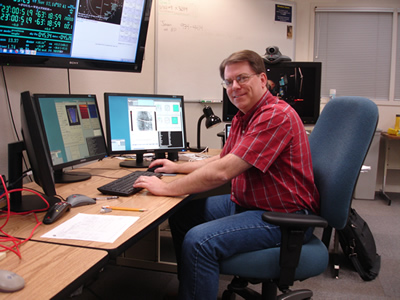
Ron Vervack at the controls of the NIRSPEC instrument (a high-resolution, near-infrared spectrometer) on the Keck 2 telescope in Hawaii during observations of comet C/2012 S1 (ISON).
Last fall, much of the attention of the star-gazing world was on two comets making their way across the sky toward the Sun: 2P/Encke, poised to make its 69th perihelion since its discovery in 1786; and the highly publicized C/2012 S1 (ISON). Both comets would eventually cross MESSENGER’s path in late November, and Ron Vervack organized an observation campaign to galvanize the probe’s instrument teams to take advantage of the dual opportunity.
Vervack, a senior research scientist at the Johns Hopkins University Applied Physics Laboratory (APL), says that he has had his eye on the skies for as long as he can remember. Some of his earliest memories are of the Apollo flights to the Moon. “I had a Polaroid camera, and I took a picture of the TV when Apollo 17 launched,” he says. “Of course, it didn’t come out to be more than the flash bulb reflecting off the TV screen, but I knew what it was. I still have it somewhere.”
A few years later, the Viking spacecraft arrived at Mars, and Voyagers 1 and 2 were shortly thereafter making headlines at Jupiter and Saturn. When Voyager 1 flew by Jupiter in 1979, Ron asked his parents for a telescope. He was given a basic 4-inch Newtonian, which he still has in his home office. “I don’t see how anyone could think about these accomplishments and not get excited.”
Ron’s interest was fueled by the popular movies of his childhood – he saw Star Wars more than 30 times (it helped that his family was friends with the theater owner) – as well as by a charismatic high school physics teacher who captivated the class with stories of his days working as a NASA engineer during the Gemini program. Vervack went on to obtain bachelor’s and master’s degrees in electrical engineering from Stanford University.
As an undergraduate, Ron landed a position with the Voyager mission, processing radio science data from Uranus. “I used to have this long print-out running around my dorm room like a wallpaper banner,” he remembers. “It was a line plot of the signal from Voyager as the spacecraft was occulted by the rings of Uranus. It was a great conversation piece as no one had a clue what it was.”
After that, he was hooked. He did a summer internship working on the camera system for Galileo, and then went on to earn a Ph.D. in planetary science from the University of Arizona. “I moved from radio wavelengths to the ultraviolet, did my dissertation on Titan’s atmosphere working with the Voyager Ultraviolet Spectrometer team, and ended up at APL.”
Ron’s first job at APL took him no farther into the solar system than our own planet. “The work involved remote sensing of the Earth’s atmosphere,” he explains. “It was interesting, but it just didn’t capture my imagination like solar system research did.” He began keeping an eye out for a position that placed him back among the planets. “I had a lot of spacecraft and remote sensing experience, so when the opportunity to apply for the MESSENGER Participating Scientist program came along, I pounced,” he says. “I hadn’t worked on Mercury before, but I was, as they say, ‘pleased as Punch’ to be selected.”
He has two critical roles on the MESSENGER mission. As a Participating Scientist, his focus is on Mercury’s exosphere, or highly tenuous atmosphere. “Besides figuring out what makes the exosphere tick by analyzing the observations, I am also responsible for the day-to-day scheduling of the observations we make of the exosphere,” he says. “The Ultraviolet and Visible Spectrometer, or UVVS, is the exospheric workhorse instrument on MESSENGER. Because it is a scanning grating spectrometer, it measures only one wavelength at a time, so to optimize the observations, I spend a lot of time each week puzzling out what would be best to do, which isn’t always that easy. If you ever saw me editing one of the weekly schedules, you’d think I was looking at the Matrix.”
Ron is also the chair of MESSENGER’s Atmosphere and Magnetosphere Discipline Group, coordinating the work of the scientists studying Mercury’s exosphere and magnetosphere. “The original observing plan we put together prior to orbit insertion for the planet’s exosphere expanded tremendously by the time we were in orbit, going from maybe 15 to 20 minutes a day to 22 to 23 hours per day,” he says. “That expanded schedule has made for a lot more work each week, but the science return is also much greater.”
Vervack points to MESSENGER’s first flyby of Mercury in January 2008, its insertion into orbit about Mercury in March 2011, and completion of the comet observations as his most memorable moments as part of the team. “Getting the first glimpse of Mercury since the 1970s and then successfully going into orbit were big deals,” he says. “Up to then, I had made a career of analyzing data from the archives, for the most part. With MESSENGER, I was part of an active mission, seeing things for the first time. And right away, we made the discovery that the calcium distribution in the exosphere is highly asymmetric. That result was completely unexpected and still defies explanation.” As for the comet observations, Vervack says, “They were a fantastic bonus and demonstrate what a great team can do when given the chance.”
Ron spends most of his free time with his family and raising his two kids (“That’s a full-time job on its own,” he says). But when he gets a few minutes to himself, he enjoys video games. “The arcade frenzy was in full swing when I was in junior high and high school, and personal computers — and the games that came with them — were making their debut,” he says. “That gaming ‘addiction’ for me has persisted through today. It is really quite impressive what designers can do with a game console.”
In fact, were he not a research scientist, he might be developing video games or working on movie special effects. “To a lot of people, programming is a chore,” he says. “I actually enjoy making the computer do things, and if I can make it do space science, all the better.” As for the movie career, Vervack laments, “Stick figures are about as far as my artistic talent goes, unfortunately, so it would have been an uphill battle.”
And lest we think his comet days on MESSENGER are over, Vervack is on the lookout for another favorable opportunity for the spacecraft to take advantage of its proximity to the Sun to observe an approaching comet. He adds, “A cometary hat trick for MESSENGER would be a cool one for the record books.”
Julie Edmonds
Helping Students and Teachers Experience the Joy of Discovery
When Australian native Julie Edmonds arrived in the United States in 1989 to begin a postdoctoral program at the National Institutes of Health, her mentor — Maxine Singer, then president of the Carnegie Institution of Washington — had just launched First Light, a Saturday science program for D.C. elementary school students. Singer invited Edmonds to volunteer, and the “eye-opening” experience set the stage for her career in science education and public outreach (E/PO).
“Textbooks did not drive the learning in First Light. Rather, students were encouraged to question 'why' and to then investigate in search of answers — then ask more questions, design more investigations — just as science is really done,” says Edmonds, who leads the MESSENGER mission’s E/PO team. “What’s more, the kids did it joyously.”
In 1999, after five years in the biotechnology industry, she stepped out of the research laboratory to join the Carnegie Academy for Science Education (CASE); and she says it’s been her goal ever since “to help as many kids (and teachers) as possible experience that joy of discovery.”
When the MESSENGER mission was proposed in 1998, CASE was included in the submission to NASA as a partner to develop educational materials based on MESSENGER’s mission and discoveries that would that would inspire students to pursue STEM careers, train teachers in the classroom use of these materials, and enhance science literacy for the general public. So, Edmonds has been with the MESSENGER mission since before the spacecraft was built.
As MESSENGER’s E/PO lead, she oversees and coordinates the extensive contributions from education experts at the American Association for the Advancement of Science, Montana State University, Science Systems Applications, Inc., and the National Center for Earth and Space Science Education. She also designs curricula and other educational products, represents the mission at local and national educational events, and conducts workshops.
“I think that the work of the MESSENGER E/PO team is critical to helping kids and adults become excited and knowledgeable about the mission and its findings,” Edmonds says. “It is essential for us to nurture the next generation of space explorers as well as to contribute to continued public support for space exploration.”
During MESSENGER’s nearly seven-year journey from launch to Mercury orbit insertion, Edmonds says the E/PO team developed a wide variety of products to familiarize students and the general public about Mercury and MESSENGER’s mission. Since the spacecraft’s first flyby of Mercury in January 2008, her team has been able to produce materials using actual data. “And of course, since MESSENGER entered orbit, we have been busy creating new ways to engage, inspire, and educate people with the wealth of data the craft has sent back to Earth,” she says. “One of the great treats in this work is that we get to collaborate directly with the science and engineering teams to develop products. It is thanks to their willing engagement with the E/PO team that we have been able to have such a high-quality program.”
As a child, Edmonds was fascinated by the “space race,” the competition between the Soviet Union and the United States for supremacy in space exploration. “As a kid growing up in a small town in Australia in the 50s and 60s, my dad would take us into the backyard and lie us down on the grass to stare upwards in a search for satellites,” she recalls. “We excitedly watched every launch that was televised (and of course I remember where I was when Neil Armstrong made those momentous steps). The words 'Cape Canaveral' had a special magic to me, so being at MESSENGER’s launch in 2004 was a childhood dream come true.”
Another magical moment for Edmonds occurred at the Johns Hopkins University Applied Physics Laboratory in Laurel, Md., on March 17, 2011 (local time), when MESSENGER executed a 15-minute maneuver that placed it into orbit about Mercury.
“The atmosphere in the packed auditorium was electric as we watched direct video feed from MESSENGER’s Mission Operations Center,” she says. “Everyone was tense as we waited to learn whether the 'rocket burn' had successfully slowed the craft so it could be captured into orbit about Mercury. And when the burn was successful, the crowd erupted with whistles, hoots, and hollers. I will never forget that.”
“Earlier on,” she continues, “we had seen Mercury itself shining in the evening sky just above Jupiter. Knowing that all those millions of miles away, our little craft was about to make space exploration history was an incredible feeling.”
The MESSENGER mission is well into its second extended mission, and scientists are continuing to discover new things about Mercury. In recent months, however, Edmonds says it’s become increasingly difficult to fully share this bounty with students, educators, and the public. Earlier this year, NASA markedly curtailed funding for E/PO activities in response to the U.S. sequester, a series of across-the-board cuts to government agencies totaling $1.2 trillion over 10 years.
“There has been a lot of uncertainty about how NASA's E/PO programs will be structured and funded,” Edmonds notes. “One of the suggestions has been to centralize E/PO away from the individual missions. But one of the greatest things about the current structure is that the E/PO team is embedded in each mission, and we have direct and personal access to members of the science, engineering, and operations teams. This relationship has allowed us to authentically convey the excitement and wonder of the latest discoveries to the public, and it would be a shame to lose that.”
Tammy and Kris Becker
Building an Atlas of Mercury, One Image at a Time
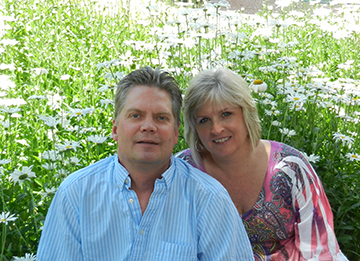
Kris and Tammy Becker.
Earlier this year, the MESSENGER mission made headlines across the nation when the team announced that it had completed the initial imaging of the entire surface of Mercury. Kris and Tammy Becker, along with other mapping experts at the U.S. Geological Survey’s Astrogeology Science Center in Flagstaff, Arizona, played a large part in that accomplishment. The husband-and-wife team has been working at Astrogeology for more than two decades, lending their expertise and support to nearly a dozen NASA space missions.
Tammy was instrumental in Kris landing at job at Astrogeology, but he is the reason they work side by side on the MESSENGER mission. Tammy began working for Astrogeology in 1981, as a senior in high school. She answered phones, sent out mail, typed proposals on the NBI word processor and copied articles for scientists. When she began attending Northern Arizona University (NAU) the following year, she was promoted by USGS to computer technician and trained in image processing.
“My first image processing task involved creating radiometric calibration files for the Voyager cameras. The mission was acquiring flyby data of the Jovian satellites at the time,” she says.
Tammy and Kris met while attending NAU in 1984 and were married in January 1988. She was majoring in computer information systems, and he was pursuing a dual degree in math and computer science. Tammy encouraged him to pursue a job at USGS. He was eventually hired for a support job, and he quickly worked his way up to writing software applications for Astrogeology. A few months after MESSENGER’s launch in August 2004, MESSENGER Co-Investigator Mark Robinson asked Kris to write a camera software model and provide basic support for the Mercury Dual Imaging System (MDIS) using Integrated System for Imagers and Spectrometers (ISIS), a specialized image processing package that is integrated into several active NASA space mission instrument ground data processing (GDP) systems.
“The MESSENGER GDP uses ISIS software we have written to generate all the geometric data for MDIS imagery,” Kris explains. “This information, in turn, is used to create final map products for team use and content for Planetary Data System archiving of the dataset. These are important contributions to support mission scientists and assist research scientists who utilize MDIS data for their projects.”
His role on MESSENGER evolved as additional functionality — radiometric and geometric calibration, photometry, PDS data product generation capabilities, specialized digital map construction, science team support — has been added to the system. He recruited Tammy at the time of MESSENGER’s third flyby of Mercury in September 2009 to provide cartographic support and image processing and analysis using ISIS.
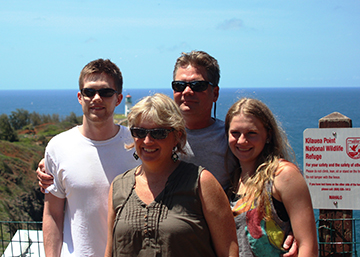
The Becker Family -- Kyle, Tammy, Kris and Madison - in Kauai, Hawaii, for the couple's 25th wedding anniversary.
The team that supports MESSENGER, which also includes Trent Hare, is currently producing controlled map products for the MESSENGER team. “Controlled products are created by generating a comprehensive image control point network of common ground features so that the position of the image footprint on the surface of Mercury can be adjusted through photogrammetric bundle adjustment techniques to correct for small pointing errors,” Kris explains. “This process improves individual image geometry for the MDIS dataset. From this adjustment, we produce digital elevation models that represent Mercury's surface and terrain, and these results are then used to create high-quality digital geometric maps.”
Both Kris and Tammy have supported multiple NASA missions over the years, but they say that MESSENGER provides a special (and rewarding) challenge.
“I have worked on many other missions with the main goal of generating cartographic global maps of the most significant moons in our solar system,” Tammy says. “While handling the MESSENGER data from Mercury is a similar experience to processing images of our Moon (and possibly Callisto and Ganymede), the data volume and varying viewing conditions make it a challenge.”
Kris says that when he began work with the MESSENGER mission, it was the first time that he served as the primary USGS member of the team. “However, my ability to provide support for MESSENGER was made possible by the contribution of many hard-working scientists and technical personnel over many years at the USGS and other institutions,” he adds. “It has also been a real joy and very rewarding for me personally to work with all the MESSENGER team personnel.”
When Tammy and Kris are not working, they spend a lot of time with their kids: Kyle, who just turned 23; and Madison, 14. “Both of our children consider our jobs ‘technical’ and ‘nerdy,’” Tammy observes. “But they seem proud of what we do.”
Tammy enjoys quilting and painting in watercolor and oil, and Kris is an avid hunter, fisherman and outdoorsman. “We have worked together all our married life,” Kris says. “I think you really have to like each other, a lot, for this to work. It really adds to the volume of challenges we face (and puts an interesting twist on office politics!), but also the benefits and rewards are appreciated.”
Kris says they sometimes struggle with turning work off at home, “but I also value the fact that we have a better understanding of each other's day. And I think we make a great team, both personally and professionally.”
Keri Hallau
Engaging the Public in Discoveries from Mercury
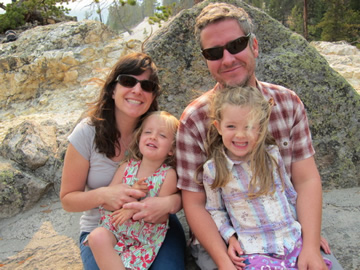
The Hallau family in their proverbial "backyard," Yellowstone National Park (August 2012). Clockwise: Keri, husband Charlie, and children, Lian (age 5), Sylvie (age 3).
Keri Hallau believes that without Education and Public Outreach (EPO) teams engaged in space missions, much of the profound and inspiring science discovered on those missions would be lost to the public and to our next generation of scientists.
“While I believe we all benefit from scientists and engineers participating in EPO, they have other primary responsibilities that necessarily limit the time they can spend on EPO,” Hallau says. “The primary goal of EPO teams is to ensure that the discoveries made by the scientists and engineers are effectively communicated to broad audiences, thereby engaging students and the public in the process of science and the rewards of our scientific endeavors.”
Hallau grew up in Traverse City, Michigan, and she earned her B.S. in Geology from the University of Michigan. She went on to get an M.A.T. in Physical Science from Northern Arizona University and an M.S. in Land Resources and Environmental Sciences from Montana State University, where she is now an online science curriculum developer and outreach coordinator in the Department of Physics.
Hallau joined the MESSENGER EPO team in July 2004 and, as a member of that team, she maintains the EPO website and creates print and web materials for a broad range of projects. For example, she’s created Mosaic Postcards from Mercury, pages for the Mercury Surface Interactive, and features for the EPO site.
Hallau says that her favorite part of the job is learning the science of the mission from the science team directly. “I love seeing the scientific process as it unfolds and twists and turns in a very authentic way,” she says. “With new data come new questions and hopefully answers, which are then either verified as many people collaborate, sharing ideas and expertise, or fade away in favor of something better supported. I wish everyone could see this process and appreciate how many very bright people have devoted so much of their time to furthering our understanding of Mercury and planetary science in general.”
In addition to her work on MESSENGER, Hallau also works on EPO teams for New Horizons and the Van Allen Probes. “All of the missions are interesting in their own right,” Hallau says. “It has been very rewarding to work on MESSENGER since launch and into the orbital phase and I think I will have the same feeling when New Horizons makes it to Pluto and beyond, but during that long journey the EPO team has been a bit quieter. And since the Van Allen Probes just launched in August 2012, I am still learning the science and meeting the team members.”
Hallau lives in Bozeman, Montana, with her husband and two young daughters. She balances her work life with outdoor activities such as rafting, hiking, ice skating, alpine skiing, and cross country skiing, and quieter pursuits such as knitting and sewing.
By Lydia Zuraw
Christopher Hash
Translating Raw Data into Revealing Maps
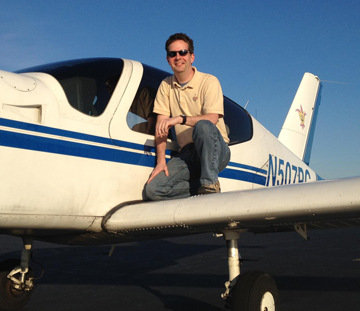
Christopher Hash at Easton Airport after passing the private pilot flight test.
As a student in middle school, Christopher Hash began a lifelong fascination with software and computer programming, but he had no idea then how such an interest might lead to a career. Later, as a high school student in Rising Sun, Maryland, Hash participated in an apprenticeship program the Aberdeen Proving Ground in Maryland. "While working with my mentor and his colleagues at an instrumentation group, I figured out pretty quickly that I enjoyed working with a team developing software systems to solve unique problems," he says.
Hash is a computer scientist specializing in remote sensing data processing software, as well as ground system design and operation. While studying computer science at Penn State and Towson State University, he worked at Aberdeen for several years. In 1996 he moved to Applied Coherent Technology (ACT), in Herndon, Virginia. "Working at ACT allowed me to gain experience on several satellite and remote sensing missions with the Air Force, Navy, NASA and others," he says. In 2000, ACT was asked to join the MESSENGER mission to help design the Science Operations Center (SOC) data processing software infrastructure and the science products that would be delivered to NASA.
Alongside ACT colleagues, including Ray Espiritu and Erick Malaret, Hash created the data processing scheme for the SOC, an integrated set of subsystems and personnel whose mission is to obtain, provide, and preserve the scientific data that fulfills the objectives of the MESSENGER mission. "My early role was software and database design," he says. "Our team needed to read the small packets of raw instrument data received from the spacecraft, and store them in a way that could later be integrated and organized into data products."
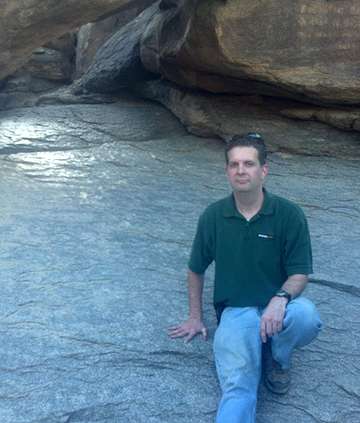
Hash on a hike up South Mountain in Phoenix after a MESSENGER Science Team Meeting.
After MESSENGER entered orbit about Mercury in March 2011, Hash's role shifted to providing support to the Mercury Dual Imaging System (MDIS) instrument team and augmenting the system he established for the mission's cruise and flyby phases to take raw compressed images of Mercury from the spacecraft through the variety of steps needed to produce global image mosaics of Mercury's surface.
"Because much of the SOC system software had been operational during MESSENGER's three Mercury flybys, the focus changed after orbit insertion to the design and creation of higher-level data products," Hash says. "This new focus has involved a mixture of writing and integrating software developed by staff at ACT and dozens of MESSENGER Science Team members."
One of those products is the highly popular ACT-REACT-QuickMap, which provides an interactive Web interface to MESSENGER data and allows users to examine global mosaics constructed with high-resolution images. In March 2013, Hash and his colleagues will be delivering to NASA's Planetary Data System the first global maps of Mercury, constructed from individual images taken over the entire year of the primary mission.
"The ACT-REACT Quickmap MDIS layer was a preliminary monochrome map product made available for the public as soon as we had delivered and released the individual images to NASA that comprised the mosaic," Hash explains. "The new maps to be delivered shortly to NASA have improvements in surface position registration, radiometric calibration, and photometric correction. In addition to the improved monochrome map, we will release our first eight-color map products."
At about the same time that ACT was asked to join the MESSENGER team, the company was also asked to join the team for the Compact Reconnaissance Imaging Spectrometer for Mars (CRISM) on the Mars Reconnaissance Orbiter (MRO). "The work is similar in many ways to supporting MDIS, but each instrument had unique challenges," Hash notes. "Although MESSENGER launched first, MRO arrived at Mars and began its primary mission much earlier, only 16 months after its 2005 launch. The ground calibration support and early operations of CRISM benefitted from the lessons learned from having already gone through the same steps for MESSENGER.
"Later," he continued, "the MESSENGER flyby and orbit software preparation benefited from the experience on the CRISM primary mission. So there was substantial synergy between the two SOC systems because of the overlapping schedules."
When he's not focused on work or reading (latest book: "Ready Player One," by Ernest Cline), Hash enjoys flying airplanes at Tipton Airport in Odenton, Maryland. He earned his private pilot's certificate in February, and he hopes to continue to earn additional ratings and certificates.
By Paulette Campbell
Jessica Call
MESSENGER’s Flight Traffic Controller
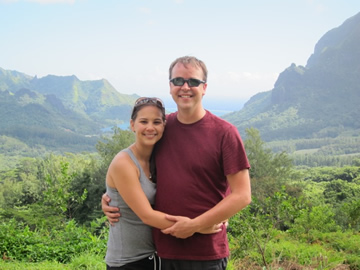
Jessica Call and her husband, Jared, in Tahiti.
The role of Jessica Call on the MESSENGER team is a crucial one. As the mission’s Deep Space Network (DSN) scheduler, she vies for time on the network of large antennas around the globe for scientists and engineers to talk to the spacecraft.
“Since each antenna can point only to one spacecraft at a time, schedulers like me negotiate on behalf of the various deep space projects to develop a plan so that each spacecraft can share this valuable resource,” she explains. “The plan — or schedule — is very similar to that of a flight traffic controller, but instead of airplanes and runways, we have radio signals and antennas.” The scheduled antenna she’s able to negotiate for MESSENGER is delivered to the spacecraft team who then plans all of the on-board engineering and science activities.
Call is a member of the Multi-Mission Resource Scheduling Service team at the Jet Propulsion Laboratory (JPL) in Pasadena, Calif., and, along with MESSENGER, she’s represented INTEGRAL for the European Space Agency (ESA), Planet-C for the Japan Aerospace Exploration Agency (JAXA), and New Horizons for the Applied Physics Laboratory (APL) in a similar role.
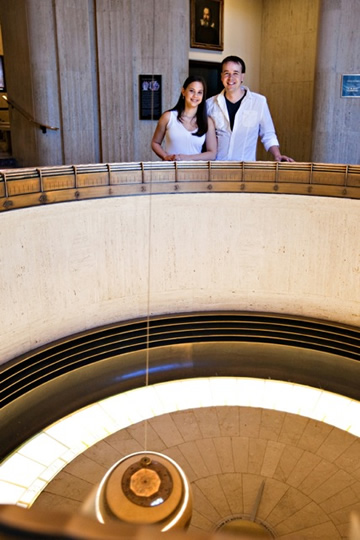
Jessica and Jared Call at the Griffith Observatory in Los Angeles.
DSN scheduling has been Call’s first exposure to the spaceflight industry. After finishing her Bachelor’s degree in Applied Mathematics at California State Polytechnic University, Pomona, in 2010, Call wasn't sure what she would do next.
“Since I had lived close to JPL while growing up [in San Gabriel], I have always been interested in JPL and wanted to learn more about what they do,” she says. When applying for jobs after graduation, she stumbled across a few interesting openings at JPL and decided on DSN scheduling because the position seemed to have been written just for her.
Call started scheduling just before MESSENGER’s orbit insertion in March 2011. “For me, finding out that MESSENGER would be the first spacecraft ever to orbit Mercury was really exciting. but it was also a little scary since I had never done any work like this before,” she says. “I was literally being thrown right into the middle of planning this momentous and critical event. It was a memorable time for me and a great introduction to the exciting things that NASA does.”
In order to stay involved in the science and engineering planning, Call participates in spacecraft planning meetings and regularly meets with other space project schedulers to understand their missions and objectives. “I really enjoy the fact that every day I come in to work I am learning something new,” she says. “Especially because I work on a multi-mission team, I am constantly interacting with different missions and learning about the different events, activities, and operations that they do.”
Outside of work, Call hikes, snowboards, and snorkels. But her biggest “hobby” of the past two years was planning her wedding, which took place in July. Call and her husband, Jared, live in Pasadena, Calif.
By Lydia Zuraw
Scott Turner
Software Engineer Relishes Solving Complicated Problems
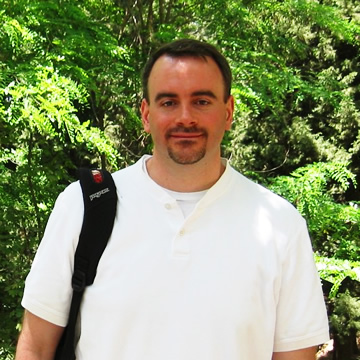
Scott Turner, MESSENGER Software Engineer
All Scott Turner wants is a good challenge. Luckily, that’s exactly what the software engineer got when he joined the MESSENGER team 10 years ago. Turner has two responsibilities on MESSENGER. He works with the Mercury Dual Imaging System (MDIS) team to calibrate alignment and distortion of the instrument’s cameras. “It's a complicated problem that typically involves taking pictures of star fields, analyzing the positions of the stars as they appear in the pictures, and inferring various calibration parameters from these positions,” he says.
His other role is providing support to scientists and engineers as they use the SPICE toolkit, a NASA software library for solving the complex geometry and timing problems that arise on deep space missions. “Many of the instrument teams on MESSENGER leverage its capabilities to address problems unique to their sensors, so I provide assistance to them as needed,” he explains. Since Turner worked for the Jet Propulsion Laboratory (JPL) group that created the SPICE toolkit before he came to the Applied Physics Laboratory (APL) in 2002, he’s an excellent resource for the APL team.
There have been many exciting moments during the MESSENGER mission, but Turner says that the most exciting for him was discovering that the MDIS resolver — a device designed to measure the absolute position of the pivot platform on which the cameras are mounted — was working properly and that the team could calibrate its response.
“There are several ways of measuring where the pivot system is pointed, and during ground testing the resolver appeared to have some trouble making the measurements it was designed to take,” he says. “So we were focused on using an alternative approach to reconstructing its position, and during this effort we stumbled upon the fact that in flight the resolver appeared to be providing consistent and accurate measurements, greatly aiding in reconstructing where images appear on the surface of Mercury.”
Turner says he started working in space exploration by chance. In the fall of his second year of graduate school at Rensselaer Polytechnic Institute, he attended a career fair and left his résumé with several companies seeking mathematicians. “A few days later, I was called back for an interview with the JPL representative, and although it went well, I was relatively undecided about what I wanted for my future,” he says.
Several months later, his now former manager at JPL contacted him for another interview. “I was impressed with the problems and challenges they faced daily, and when they offered me the job, I accepted,” he says. “I've been hooked on space exploration ever since.

Scott Turner and his girlfriend, Kathy, at a wedding
Lately, Turner has also been assisting scientist and engineers with the Miniature Radio Frequency (Mini-RF) instrument on the Lunar Reconnaissance Orbiter (LRO) in planning bistatic radar measurements of the lunar surface. “We are transmitting a signal from the radio telescope at Arecibo, bouncing it off the Moon, and receiving the signal on the antenna of the Mini-RF radar instrument on the LRO spacecraft in lunar orbit,” he says. “I designed and built the software system that identifies target opportunities, points the Arecibo telescope at the appropriate region of the lunar surface, and orients the spacecraft to place Mini-RF's antenna into the desired target geometry. It's a challenge meeting all of the observational constraints, so in that way it's quite similar to my work on MESSENGER.”
In addition, Turner built and maintains the software tools that are used to command the Magnetospheric Imaging Instrument on the Cassini spacecraft in orbit around Saturn.
Turner is always working on several projects at once, and after the MESSENGER mission is over he expects to pick up work with other spacecraft such as New Horizons or Solar Probe Plus. He looks forward to the opportunity to apply the team’s experience with MDIS in-flight calibration to other instruments.
“The best part of my job is solving complicated problems,” Turner says. “There is nothing quite like the moment when you crack a difficult one. It's something I have enjoyed since school, and it drives me to seek out increasingly complex challenges.”
With no shortages of these sorts of problems at APL, Turner loves his job. “I am fortunate enough that the other scientists and engineers I work with have confidence in my abilities, and they let me tackle these sorts of problems on a regular basis,” he says. “It makes going into work in the morning fun.”
By Lydia Zuraw
Lillian Nguyen
MESSENGER Engineer Helps Find Discovery Opportunities
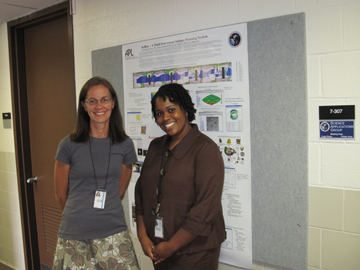
Lillian Nguyen and 2010 summer intern, Michelle Collins.
For computer applications software engineer Lillian Nguyen, working on MESSENGER has been a vehicle for continual learning. "I've never had a dull day here," she says of her job at the Johns Hopkins University Applied Physics Laboratory (APL) in Laurel, Md. "I learn something new almost every day! It's fantastic, and it's really exciting to be one of the first people to see some of the images."
While growing up in Munster, Ind., Nguyen's parents – both of whom had careers in the sciences – inspired her interest in nature and science. "When I was in high school they took me on a tour of a [Department of Energy] laboratory," she recalls. "It was amazing to see some of the research being done. It sparked my interest and led me to apply to summer internships at research laboratories."
And as she navigated the advanced math courses required to set her educational path, her father, an electrical engineer, was always on hand to assist. "He helped me through my first class in calculus, which I initially had some trouble grasping. At one point everything finally 'clicked,' and after that there was no question about what I wanted to study in college."
What kept her interested and wanting to learn more was the use of mathematics to describe nature. "What really fascinated me was that you can write equations that describe gravitational forces or fluid flows, or even something as simple as a circle," she says. She went on to earn a bachelor's in mathematics from Indiana University and a master's in mathematics from Johns Hopkins University.
In 2000, Nguyen joined APL's Space Department, where she has worked to develop algorithms and software for data analysis and for designing spacecraft autonomy systems. Her first role with the MESSENGER mission was to create files known as "SPICE kernels," which are used primarily in data analysis. "They describe the science instrument mounting alignments, fields of view, and optical parameters," she explains.
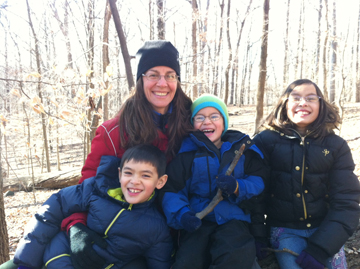
Lillian and her children (Kai, Teo and Anya) at Patapsco State Park in January 2012.
She also wrote the SPICE frames and instrument kernels for New Horizons, and she developed a telemetry visualization application with the SciBox library for the STEREO mission. "The work on STEREO was similar in that I used the same software library, but the scale on MESSENGER is much larger, because the code coordinates the activities of all of the instruments and produces hundreds of reports and other visualization tools," she says.
Recently, Nguyen joined the SciBox software development team charged with the critical task of identifying data-taking opportunities for the science instruments, scheduling them, and ensuring that they comply with spacecraft safety constraints. She also provides reports and plots that allow instrument scientists to quickly review the planned observations. "If I can acquire high-quality data given the challenging orbital geometry and spacecraft operational constraints, then my work is a success," she says.
Outside of work, Nguyen's three children are her biggest hobby. "They are my biggest joy in life, and I spend as much time with them as I can," she says. Their favorite family activities are biking, camping, hiking, and geocaching – an activity that involves using a GPS to locate hidden containers.
When she does find the occasional solitary moment, she spends it reading (most recently "Into the Wild," by Jon Krakauer). Four years ago, she joined a beginner's running group at APL and was surprised by how much she enjoyed it. "I've been running ever since, and I participate in several events each year, my most recent being the Maryland Half Marathon."
By Lydia Zuraw
Eric Melin
Engineer Keeps MESSENGER Software Grounded in Quality
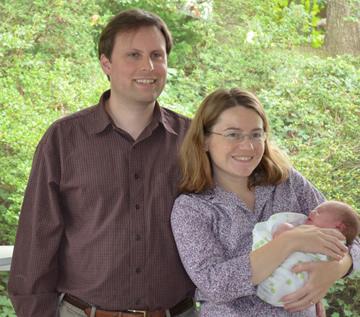
Melin, his wife Liz, and their daughter Tabitha, born in September last year.
It seemed natural for Eric Melin, MESSENGER’s lead ground software engineer, to pursue a career in science. Both his parents were professionally involved in science and engineering: a chemical engineer, his father spent most of his career working for Exxon on topics from coal to oil liquefaction technologies; and his mother worked as a chemist before putting her career on hold to raise Melin and his sister. After graduating from high school in New Jersey, Melin set off for Cornell University to pursue a B.S. in electrical engineering and an M.Eng. in computer science.
Melin says that he was particularly interested in working with computers, especially given the exciting changes brought about by increased processing power and networking. “My first computer was an Apple 2c in green monochrome,” says Melin. “By the time I was in college Pentium computers had just come out and the internet enabled new forms of mass communication. This was a pretty major disruption to the traditional way of doing things, and it was clear that more and more things were becoming possible via high-speed connectivity and computation.”
In one of his early jobs – with a product-strategy consulting firm – Melin designed an automated underwriting decision engine to qualify mortgage applications with multiple lender loan programs. Over the years, he applied his expertise – designing, building, and deploying new systems, or enhancing old ones – to a handful of other software companies before landing at the Johns Hopkins University Applied Physics Laboratory in Laurel, Md., in 2008.
“I am excited to be working for space missions because they are truly unique scientific explorations with challenging technical constraints” he says. “There was an opening for my skill set and my first project at JHU/APL was to incorporate the CCSDS File Delivery Protocol (CFDP) into the ground systems for MESSENGER and the Radiation Belt Storm Probes (RBSP) mission.”
Today Melin handles MESSENGER’s spacecraft command and telemetry. Every interaction with the spacecraft takes place through the ground software, and he is responsible for working to resolve approved issues and feature enhancements related to the ground software. “It is critical that commands can be sent and reach the spacecraft,” he explains. “It is also critical that we are able to receive telemetry from the spacecraft to receive science data and interpret spacecraft health.”
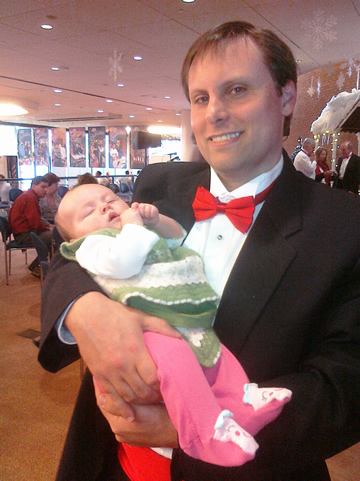
Melin and Tabitha at an APL holiday party.
Establishing and validating MESSENGER’s software before launch was incredibly vital to the success of the mission. And now, post-launch updates are required to respond to problems observed onboard. Melin points out that it’s much less expensive and less risky to change ground software than flight software. There are also a number of bugs and desired enhancements to software discovered during operational use, and Melin is in charge of ensuring that the appropriate changes are proposed and made.
Melin fills the same role on the New Horizons mission to Pluto and the Kuiper Belt. “There is a large amount of functionality shared across MESSENGER, New Horizons,” and the Solar TErrestrial RElations Observatory (STEREO) mission, he says. “The ground lead for these missions has a similar role, and a problem in one mission is often present in the others as well. I have also done software development for the RBSP mission, which has similar ground software needs but is working with different software.”
When he’s not ensuring that the software for these critical missions stays on track, Melin spends his time heavily involved in the APL music scene, as a jazz vocalist with the APL Scats and as a saxophonist with Close Enough for Jazz, an APL instrumental combo.
Although his seven-month-old daughter, Tabitha, does not appear to be particularly impressed with his job, she “does seem somewhat impressed when being held up and carried around the house like an airplane.” And if she grows up to be a rocket scientist, Melin says, it will more likely be due to the influence of his wife, Liz, who works as an astrophysicist at Goddard.
By Paulette Campbell
Sarah Hefter Flanigan
A Girl Scout Trip Leads to a Rewarding Career in Space Exploration
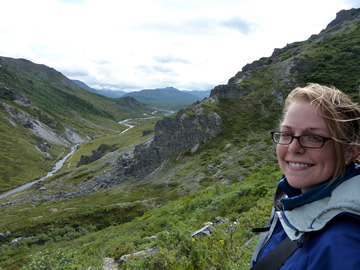
Sarah Flanigan in Denali National Park, Alaska, August 2011.
As a Girl Scout in the second grade, Sarah Hefter Flanigan visited the Challenger Center for Space Science Education in Alexandria, Virginia. “You went and you got to play along as if you were in the mission control center in Houston or you were an actual astronaut. Ever since that day, I knew that I wanted to do something with space,” Flanigan says. “I was always into math and science, and that visit just solidified my yearning to be somehow connected to space.”
Today, Flanigan is on the guidance and control (G&C) team for the MESSENGER spacecraft, as part of which she plans and simulates command loads sent to the spacecraft and monitors telemetry. She also coordinates special activities, such as orbital correction maneuvers. The G&C team is responsible for commands to change spacecraft attitude as well as those for managing the solar arrays, star trackers, and other components of the spacecraft.
Originally from Prince William County in northern Virginia, Flanigan attended Virginia Tech, where she earned an undergraduate degree in aerospace engineering. While pursuing her master’s degree in engineering at Cornell University, she worked on a project to produce a student-built satellite. That experience, along with her passion for interplanetary exploration, led her to join APL in 2008.
For Flanigan, the most exciting part of her work is when the scientists receive their data. “It kind of puts all your hard work into perspective, and it’s really great to be a part of that even though I’m not the one interpreting the science results,” she says. “It makes me feel like I’m touching something that not a lot of people get to be a part of, and it’s just very cool to have helped them achieve their discoveries.”
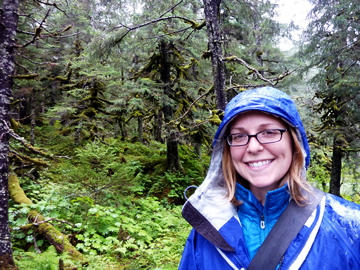
Sarah Flanigan in Portage Valley, Alaska, August 2011.
Flanigan says she is looking forward to MESSENGER's extended mission, which begins in March 2012. She is up for the challenge of utilizing as much of the spacecraft's propellant as possible and implementing new types of science observations that will allow the Science Team the best opportunity to answer the extended mission's six science questions.
When asked what she would be doing if she weren’t in her current profession, Flanigan couldn’t imagine doing anything else with her life. “There’s not that much else that I like as much as this,” she explains.
Flanigan also works on G&C for the Pluto-bound New Horizons spacecraft, but she doesn’t work as much on New Horizons as she does on MESSENGER, since New Horizons is in hibernation for most of the year. “Around the time that the MESSENGER extended mission ends, New Horizons will be picking back up, so I’ll be able to spend more time on New Horizons,” she says. She also says she would like to work on the development side of a mission at some point since, she didn’t have that opportunity with either MESSENGER or New Horizons.
Part of the reason she loves her job is because of the strong team dynamic on both the MESSENGER and New Horizon missions. “Sometimes you have to work all weekend and stay up late, and having that strong team makes everything worth it,” she says. “We have a good team, and I think that’s why we’ve been so successful.”
By Lydia Zuraw
Annette Mirantes
Software Designer’s Work Critical to MESSENGER Mission’s Continued Success
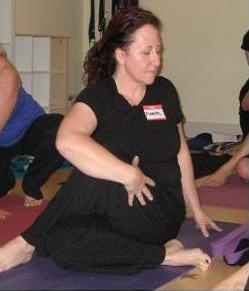
Mirantes, a yoga practitioner, recently earned her 200-hour teaching certification.
Software engineer Annette Mirantes joined the MESSENGER team when the mission was in the design phase. “That was fun,” she says. “There was a lot of discovery. We were just figuring out what the spacecraft was going to do. But before we knew it, we were in the integration and testing phase. All of a sudden it was very real. There was a real spacecraft, and we were doing simulations.”
The early work that Mirantes and the flight software development team did during MESSENGER’s pre-launch phase has been key to the continued success of the mission. It’s one thing to handle a computer error or bug when it occurs on a desktop, she says, but it’s another situation altogether when the anomaly occurs onboard a spacecraft millions of miles from Earth. “Great care must be taken in software development before launch to ensure that software anomalies onboard are properly handled and analyzed,” she says.
The team’s responsibility does not end at launch. Software updates – patches or full-blown deliveries – have been required to enhance capabilities or to fix bugs throughout the mission. Since MESENGER’s launch in August 2004, Mirantes and her software team have completed a couple of software builds – computer commands to direct the spacecraft’s autonomous operations and science gathering. But in the last couple of years, not much has changed.
“We just monitor [the spacecraft] and make sure everything’s okay; but there’s hasn’t been a lot to do — which is a good thing,” she says.
Mirantes likens MESSENGER’s orbit insertion day to the day the spacecraft launched, because there was “a whole 15 minutes when it’s either sink or swim.” She says she spent Mercury orbit insertion in the Mission Operations Center, staring at the screen, “which, thankfully, was green the whole time.”
If she were granted her personal wish for MESSENGER, she and her colleagues in the Space Department’s Embedded Applications Group would be allowed to load up and try out some new software on one of the back-up processors after the primary mission is finished. But ultimately, “I just want it to get through primary mission,” she says, knocking on the wooden table where she’s seated. “Maybe they’ll want to extend it for another year. I’d like to see MESSENGER just keep sending back data until the heat is too much for it.”
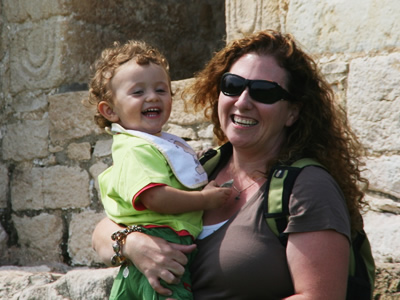
Mirantes and her son, Gabriel.
For two years of her time as MESSENGER’s flight software lead, Annette Mirantes worked from her home office — in Gijón, Spain.
After college, Mirantes moved to Gijón to install computer equipment. She was supposed to stay for six weeks, but ended up staying six months and eventually married her translator. In 2007, six years after joining APL and the MESSENGER team, Mirantes, her husband, Luis, and their one-year-old son, Gabriel, moved back to Gijón and Mirantes began to telecommute. “It was a good way to spend a couple of years,” she says.
With the six-hour time difference, she would work in the morning before anyone was even at the Laurel, Maryland-based laboratory, go out for the afternoon, and come back for dinner at 7 p.m., when her colleagues were returning from lunch. The inability to meet with people in person was a challenge at times, but she used a variety of technologies such as Instant Messaging and Skype to communicate and kept a lot of documentation and analyses.
Originally from Cannelton, Indiana, Mirantes received her undergraduate degree in electrical engineering from Purdue and, later, a master’s in software systems engineering from George Mason University. She became interested in space missions after Apollo 11 landed on the Moon in 1969. “I was five when Neil Armstrong landed on the Moon,” she says. “I remember watching the footage when I was little, and I thought it would be really cool to be an astronaut. Then I thought ‘maybe not astronaut, maybe I’ll just send rockets up.’”
During her high school years, Mirantes worked at a local paper mill in the engineering department. “I was used to a hard hat and steel-toed boots, so my first job out of college was installing computer equipment in steel and aluminum mills around the world,” she says. That’s how she ended up in Spain. After six months there, she and her husband moved to the Washington, D.C., area, and she began working for Orbital Sciences. She stayed there until 2001 when APL was hiring staff for the MESSENGER and STEREO missions.
Outside of work, Mirantes is a yoga practitioner and recently earned her 200-hour teaching certification. “I’m hoping to get my 500-hour certification this year; but we’ll see. It’s hard with him,” she says, gesturing to a large picture of her son Gabriel, now 5 years old, pinned on her bulletin board. “I love yoga. It keeps me sane and grounded and flexible and able to run after him and play on the floor and get up and down.”
Work, a child, and yoga are largely all she has time for. She is a huge fan of Spanish soccer, and she supports the national team and her husband’s local team, Sporting de Gijón. When she has the time, she’ll sneak off to do some reading.
Mirantes and her family now live in Bethesda, but they travel to Spain several times a year to give her son equal time with both sets of grandparents.
Karl Whittenburg
A Physicist Relishes the Challenge of Puzzling through MESSENGER’s Tasks
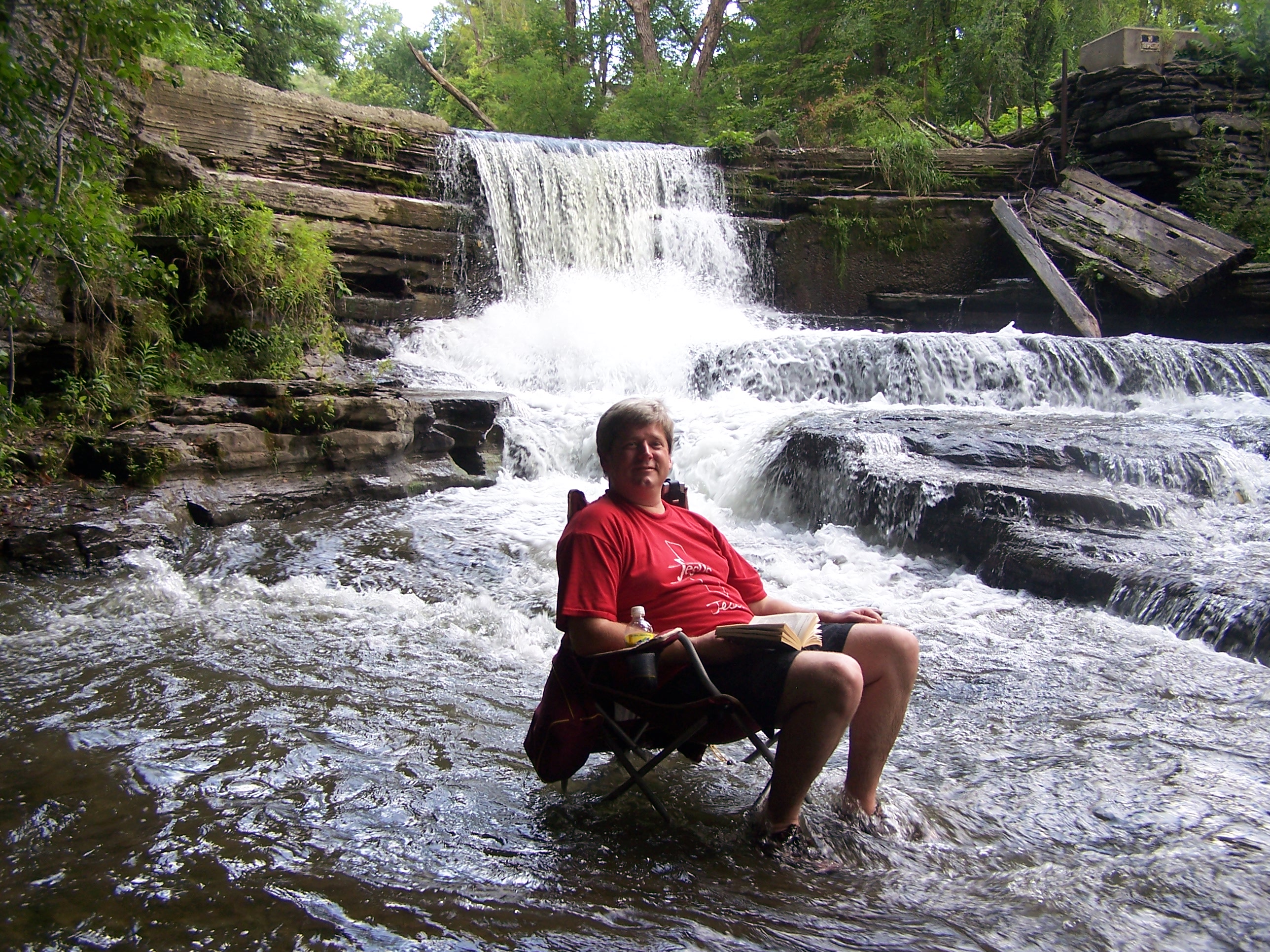
Whittenburg on vacation in Ithaca, N.Y., reading a sci-fi novel in his favorite gorge.
While growing up in Montclair, N.J., MESSENGER Deputy Mission Operations Manager Karl Whittenburg loved to read science fiction and was always interested in space exploration — especially the Viking missions to Mars in the mid to late 1970s and early 1980s. “The idea of sending a spacecraft to another planet to explore and study fascinated me,” says Whittenburg. “The Apollo Moon missions, which had captured my imagination, had stopped some years earlier, and I thought it was amazing that it was possible to build and send unmanned ‘robot’ spacecraft to Mars. The pictures they sent back just made me want to see more.”
Whittenburg attended Montclair State College (now University), where he earned a bachelor’s degree in physics, computer science, and mathematics. He began as a physics major with a concentration in astronomy and astrophysics but soon became interested in computers. “All the interesting classes were closed to non-majors because there were just so many computer science majors,” he says. Not to be thwarted, he added a computer science major to gain entry into those classes, with the intent of dropping it later.
“As time went on I found myself signing up for more computer classes and never got around to dropping the major,” he says. “In addition to computers and physics, I loved math and couldn’t stay away from those classes either.”
After graduating from MSC, Whittenburg took a job on the Hopkins campus in Baltimore at the Space Telescope Science Institute. After working on the Hubble Space Telescope for nearly eight years, a friend told him about the Near Earth Asteroid Rendezvous mission at APL. He says he was attracted to the idea of sending a spacecraft to an asteroid and orbiting it. By November 1996, he was working at APL on NEAR and has been at the lab ever since.
His duties as MESSENGER’s deputy “MOM” include representing the program at reviews and meetings, approving uplink and sequence change requests, developing concepts of operations, coordinating the efforts of the off-line analyst team, and filling in for the Mission Operations Manager when he’s unavailable.
Whittenburg serves as the scheduling and planning team lead, reviewing all command loads for errors, conflicts, and logical consistency. He also conducts anomaly analysis of MESSENGER flight and ground systems as necessary and takes appropriate corrective action as required. He performs these same tasks for the New Horizons spacecraft as the mission’s Chief Mission Operations Analyst.
Whittenburg loves to solve puzzles. “My favorite part of the job is working out how to accomplish the ‘objective de jour’ given the associated constraints and limitations,” he says. “I also enjoy sequencing the propulsive maneuvers for both MESSENGER and New Horizons.”
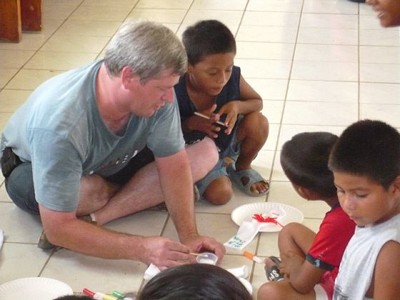
Whittenburg helping local children with a craft project during a youth mission trip to Belize in 2010.
In the months leading up to MESSENGER’s Mercury orbit insertion, Whittenburg says he spent a great deal of time working and re-working the command sequence for the event. “The orbit insertion maneuver had to be perfect; we were only going to get one chance to pull it off,” he says. In addition to the primary burn sequence, he worked on contingency scenarios for things that could possibly go wrong.
On the evening of March 17, he was in the mission operations control center, monitoring the progress of the orbit insertion sequence. “I remember being very nervous in the final hours leading up to the burn,” he says. “I was checking telemetry to verify each step in the pre-burn setup configuration and hoping that all my contingency planning would turn out to be unneeded effort.”
The thrusters started to fire and Whittenburg’s eyes were glued to the Doppler residual plot tracking the burn performance. He says he was relieved to see the Doppler display reveal the burn executing exactly as planned. When it had reached the capture threshold, there was a lot of cheering, but he didn’t join in just yet because his attention was still focused on the remaining 20 percent.
“Even after the burn finished successfully I found myself needing a few moments to really absorb it before joining in the celebration,” he says. “After spending so much time thinking about what could go wrong I guess I was almost surprised by our success — we were finally in orbit around Mercury!”
Since MESSENGER entered orbit the pace of operations has increased dramatically. Instead of long leisurely “cruise” command sequences, Whittenburg and his team are constructing weekly command loads densely packed with activities to collect thousands of images, spectra, and other science data. He hopes to see an extended mission for MESSENGER so that it can continue to collect data from the planet for another year.
Outside of work, Whittenburg still reads science fiction novels and someday hopes to try writing them. “I grew up reading such authors as Arthur C. Clarke, Isaac Asimov, and Robert Heinlein,” he says. “My favorite books were probably Rendezvous with Rama by Clarke and Tunnel in the Sky and Star Man Jones by Heinlein.” He is eagerly awaiting the release of science-fiction and fantasy author David Weber’s latest Honor Harrington installment.
He also enjoys hiking and camping with friends and family and spends a great deal of his time working with the youth in his community through his church.
Whittenburg lives in Eldersburg with his wife of 22 years, Ruth (whom he met in college). They have three children: Kyra, 19, entering her junior year in college and preparing to study abroad this fall; James, 18, who is preparing for his freshman year of college; and Tyler, 16, who will be a junior in high school this fall.
By Lydia Zuraw
Dawn Moessner
A Designer Finds Her Mission
Dawn Moessner joined the MESSENGER mission a bit too late to take any of the credit for the work that went into the overall mission trajectory design that had been done before launch. But since she was first assigned to MESSENGER, when she joined the Johns Hopkins University Applied Physics Laboratory (APL) in August 2008, she has helped with redesigns to optimize maneuvers and ensure that the orbit-phase maneuver plan allowed the science team to gather the type of data they wanted.
The Hubble Space Telescope repair mission in 1993 fascinated Moessner and was what first inspired her to become an engineer. “The fact that engineers could figure out what had gone wrong and come up with a way to fix the problem, and then, to top it all off, that astronauts could actually perform the repairs in space was incredible,” she says. “I was caught, hook, line, and sinker.”
Moessner grew up in Louisa County, Va., and attended Purdue University in West Lafayette, Ind., where she received both her bachelor’s and master’s degrees in aerospace engineering.
An incredible moment for Moessner came during MESSENGER’s second Mercury flyby shortly after she started working at the lab. “I was in the Mission Operations Center when the photographs of Mercury’s surface began to come down and I was just awed by the fact that no human being anywhere had ever seen what I was looking at right then,” she says. “In that moment I completely understood what drives us to explore our world and the cosmos.”
In the Mission Operations Center during orbit insertion, Moessner spent most of her time getting software ready for post-maneuver inputs and then waiting for the maneuver to begin. “My confidence was pretty high that everything would go as planned, but there was always that little nervous thought in back of my head that Murphy’s Law would strike,” she says. Unlike the second flyby, MOI gave her a definite sense of accomplishment because she had a much more substantial role in the maneuver’s design as well as relief that everything had run smoothly.
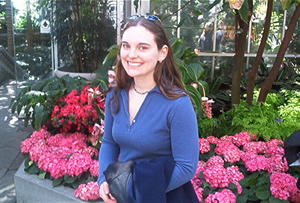
Now that MESSENGER has entered orbit about Mercury, there are several more products that the mission design team needs to deliver to other teams — many of them on a weekly basis. In addition, the pace of maneuvers has increased so that her team must produce designs every six weeks instead of once a year or so. “Prior to orbit there were also more opportunities to make the trajectory and maneuvers more efficient by slightly tweaking a planetary flyby or maneuver location,” she says. “Now that we are in orbit we don’t have that sort of leverage anymore.”
In addition to MESSENGER design work, Moessner has had the chance to perform some mission design work for a few proposals and internal research and development projects at APL, but unlike MESSENGER, these other projects have all been at pre-launch phases.
When not being a part of interplanetary exploration, Moessner enjoys camping, hiking, martial arts, reading, and the occasional sewing or arts and crafts project. “Although,” she adds, “ever since my son, Patrick, was born in July 2010, my husband, Mike, and I haven’t had much time for anything other than keeping up with the little guy.”
Moessner, her husband and their son live in Bel Air, Md.
By Lydia Zuraw
Carolyn Ernst
Geologist Enjoys Finding the Story in MESSENGER’s Features
Carolyn Ernst loves looking at planetary surfaces that have never been seen before, so the long-neglected innermost planet is right up her alley.
“It’s looking as though a lot of Mercury’s surface may be made up of old volcanic flows,” says 31-year-old Ernst, discussing her research published in Icarus in September 2010. “Back when Mariner 10 went by in the 1970s, there was a big debate over whether the smooth plains were impact ejecta or volcanic. I think these recent MESSENGER flybys have really shown that a large number of them are volcanic.”
“The science team asked me to analyze the new MESSENGER images and color data from the Mercury flybys,” Ernst says. She did just that, publishing “Exposure of spectrally distinct material by impact craters on Mercury: Implications for global stratigraphy” in Icarus.
“This project was cool because no one had looked at Mercury in quite this way before,” Ernst says. “I used impact craters as tools to observe the subsurface by looking for obvious differences between the material excavated by craters and the surrounding, pre-impact surface. These craters allow us to reconstruct aspects of the planet’s history that would otherwise be hidden from view.”
Growing up, Ernst was captivated by space. “Space, science, dinosaurs — I liked those kinds of things that most kids liked, but it never occurred to me that I could make a career out of one of them,” she says.
As an undergraduate at Brown University, she concentrated in physics and discovered planetary science through the geology department. “The stars interested me, but the planets fascinated me,” Ernst says. “I slowly came to the realization that if my professors had made a career out of studying the planets that maybe I could too.”
After earning her Ph.D. in geological sciences from Brown, Ernst joined the Johns Hopkins University Applied Physics Laboratory (APL) in 2008 as a Postdoctoral Research Associate. She was soon brought on to help with the day-to-day operations and support of the Mercury Laser Altimeter (MLA) and to work with data from the Mercury Dual Imaging System (MDIS).
Her role in the mission has since broadened considerably. Now a full-time scientist at APL, she serves as the instrument sequencer for MLA and an instrument team associate for MDIS.
“Every week I am in charge of compiling, verifying, and delivering the command sequence that is uploaded to the spacecraft, which tells MLA when it should operate in science mode (firing the laser and receiving the signal) and when it should operate in standby mode (waiting for the next opportunity to be within range of the surface),” she explains. “I am also part of the team that will validate the data that are returned to Earth after Mercury Orbit Insertion and monitor the global data coverage.”
Ernst is also an integral part the team calibrating MDIS and preparing images for public release on the MESSENGER mission website.
As an associate member of the science team, Ernst gets to dig deep into the data to investigate science question such as those addressed in her Icarus paper.
She enjoys having the opportunity to work on a mission as part of a team and finds the collaborations with her co-authors to be one of her favorite aspects of the job.
“I like the fact that I belong to a collection of scientists with different areas of expertise working on fundamental questions about Mercury,” Ernst says. “I can collaborate with and get advice from these colleagues and provide knowledge and assistance in return. I’m at an early point in my career; so, it’s incredible to have the opportunity to be a part of the MESSENGER team and to learn from and work with so many knowledgeable people.”
Richard Starr
MESSENGER's X-Ray Visionary

Richard Starr enjoying one of the perks of working in space science: travel to interesting and exciting locales. In this case he is exploring new lava fields on the Big Island of Hawaii.
Instrument Scientist Richard Starr has been working with the X-Ray Spectrometer (XRS) on the MESSENGER spacecraft since the beginning. During its design and test phases, he made sure the instrument would meet the requirements of the Science Team. Now, he reviews its data daily.
"We know what our science goals are," Starr says. "In the case of the X-Ray Spectrometer it’s to measure florescence from the surface of Mercury and to use that florescence to interpret the surface composition of the planet."
His work continues as he verifies the health and safety of the XRS. "The data are the ultimate proof that the instrument is doing well and will provide the needed science," he says. In addition to ensuring that XRS is working properly, he is responsible for any commands that need to be sent to change its status.
Starr’s generation grew up with the space program. "Like millions of others I stayed up late on July 20, 1969, to watch Neil Armstrong walk on the Moon," he says. "But my early interests in science were more general. I knew I wanted to study physics, but I didn't have any more specific notion than that until graduate school. After graduate school, my transition from nuclear physics to space science seemed fairly natural and in hindsight was a great choice."
Starr received his undergraduate degree in physics from New York University and his master’s in physics and doctorate in nuclear physics from the University of Illinois. He worked as a postdoctoral fellow at the National Bureau of Standards (now the National Institute of Standards and Technology) before starting at NASA’s Goddard Space Flight Center as a Research Associate Professor through The Catholic University of America in 1980.
At Goddard, he began working in the area of solar physics and planetary physics. The transition was not difficult because the instrumentation and science were similar to those of his earlier work. "We were still looking at gamma-rays and nuclei but different excitation sources in the way of particle accelerators, for example, solar flares or cosmic rays," he says.
In addition to being an Instrument Scientist, Starr is a Participating Scientist with MESSENGER. This means he joins a team of scientists playing critical roles in examining the images and data gathered by the spacecraft and conducting science investigations addressing the broad science goals of the mission. As a Participating Scientist, Starr studies data from the three instruments involved in geo-chemistry: the XRS, the Gamma-Ray and Neutron Spectrometer (GRNS), and the Mercury Atmospheric and Surface Composition Spectrometer (MASCS).
One of Starr's favorite aspects of working on MESSENGER is studying the data. "It's a real pleasure to see all of your hard work paying off in terms of an instrument that works well and produces good data. Even though we have not been able to do any science at Mercury yet, I’m still very excited about what the instrument is going to be able to do once we get into orbit," he says.
He also enjoys the team meetings where he gets to hear colleagues discuss their science. "There are a lot of very good people on the MESSENGER team doing great work, and it’s always enjoyable to hear them talk about it so enthusiastically," Starr says.
Over the years, Starr has been involved with several flight missions, including Mars Observer, Near Earth Asteroid Rendezvous (NEAR) Shoemaker, Mars Odyssey, and Lunar Reconnaissance Orbiter, as well as MESSENGER. "All flight missions are exciting - launch, first instrument power up, first return of science data - it's always thrilling and a huge relief when you know everything has worked as planned," he says. MESSENGER is the first mission on which Starr has held the title of Instrument Scientist, but he essentially filled the role for the X-Ray/Gamma-Ray Spectrometer (XGRS) on the NEAR Shoemaker mission.
Starr is strongly convinced that MESSENGER will accomplish the basic science goals that the team has set out for it. "I'd like to see MESSENGER give us wholly new insight into Mercury, and I think it will," he says. "I think that there are some important questions about Mercury which can and will be answered by MESSENGER once we get into orbit, and it will be very exciting for everyone on this team and in the science community in general to see what we learn after we get there."
By Lydia Zuraw
Highlighted Team Member: Nancy Chabot
Scientist's Passion for Discovery Fuels Curiosity about Mercury
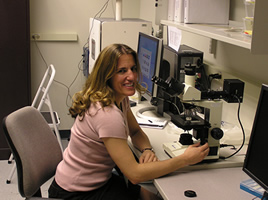 Chabot in her office at APL
Chabot in her office at APL
When she was in graduate school, Nancy Chabot would hold up a globe of Mercury to show a group of schoolchildren, but one side was blank because no one had ever seen it. “It’s really pretty amazing that there’s so much we don’t know about our own solar system,” says Chabot, eyes twinkling. “Before the MESSENGER mission, only 45 percent of Mercury had been seen – which is kind of crazy.”
Chabot is one of the MESSENGER team members working to answer the fundamental question “What does Mercury look like?” In charge of planning the science observations taken by the wide- and narrow-angle cameras, Chabot is the Instrument Scientist for the Mercury Dual Imaging System (MDIS). “It’s great to be involved with something where the questions you’re asking are so first-order that anyone can understand them and appreciate the excitement that comes along with that first discovery of new things,” she says.
That passion for discovery has been with Chabot since her childhood. “I was always a big space geek growing up,” Chabot says. “I loved Star Wars and I was really into all the sci-fi movies and things like that.” She always did well in science and math classes, but it wasn’t until college that she started to wonder what she wanted to spend the rest of her life doing. She had many interests but found the idea of “the final frontier” very attractive.
Excited by space research, Chabot earned an undergraduate degree in physics from Rice University in Houston and a doctorate from the University of Arizona in planetary science. After grad school, she worked for the NASA Johnson Space Center for two years and Case Western Reserve University in Cleveland for four before joining APL in 2005.
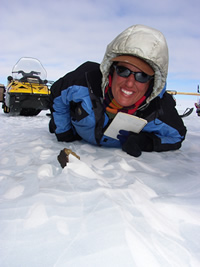 Chabot in Antarctica, gathering meteorites. Scientists take care to minimize the meteorite's movement and handling during collection. So to capture this Kodak moment, Chabot had to get down on the ice, where the meteorite lay.
Chabot in Antarctica, gathering meteorites. Scientists take care to minimize the meteorite's movement and handling during collection. So to capture this Kodak moment, Chabot had to get down on the ice, where the meteorite lay.
While at Case, Chabot traveled to Antarctica four times to collect meteorites, a trip she had made once previously during graduate school. She and her team lived in tents for six weeks at a time during the “strikingly beautiful” Antarctic summer, November through January. In some seasons, they found over a thousand meteorites. “They’re pieces of the solar system that nobody’s ever seen before, and you’re the first one to find them,” Chabot says. After collection, the meteorites become available to the international scientific community for study.
“It was rewarding to be involved in a program where you’re doing more than any one person can accomplish and really providing a big benefit to the science community,” Chabot says about her work in Antarctica. It was an opportunity to collect samples that would be studied by scientists around the world.
She enjoyed doing work that benefited so many scientists, but it was a hard lifestyle to sustain. “I decided at some point it was time to get a real job and settle down a little bit, and I was really happy to come to APL,” she says.
Now, Chabot spends about half of her time in her lab, continuing her research on meteorites and planetary interiors. She is also working on a Discovery proposal for the next potential solar system mission and development work for other missions to small bodies such as asteroids. The rest of her time is dedicated to MESSENGER.
“I really enjoy working on the MESSENGER mission,” Chabot says. “I think it’s really great to be part of this first spacecraft to ever orbit Mercury. I just love saying that.”
The most rewarding outcome of the mission for Chabot will be the new map of the planet. “At the end of the day, we’re going to get global coverage of the surface of Mercury that was previously completely unavailable,” she says. “We’re basically rewriting all of the maps and all of the images that people will use for Mercury in the future.”
By Lydia Zuraw
Highlighted Team Member: Rick Shelton
MESSENGER's Primary Scheduler Keeps Things on Track
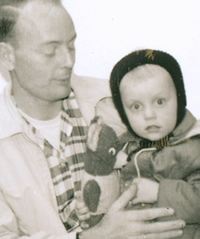
When Rick Shelton started at the Applied Physics Laboratory 31 years ago, he was working with submarines. After ten years, he wanted a change of pace and transferred to the Space Department, where he now works on MESSENGER’s mission operations team.
As a senior engineer, Shelton performs many duties. He is the team’s primary scheduler, he handles configuration management of files, and he helps operate MESSENGER’s instruments. Specifically, he works with the Mercury Dual Imaging System, Gamma-Ray and Neutron Spectrometer, X-Ray Spectrometer, and Energetic Particle and Plasma Spectrometer.
When Shelton began his undergraduate studies at Penn State, he was not sure what career he wanted, but he was very good at math and science. “There seemed to be a lot of choices in engineering,” Shelton says, so he declared a chemical engineering major in his freshman year. He soon switched to engineering science, the honors major in the College of Engineering at Penn State, because it had a much broader focus. He later earned an MS degree in computer science from Johns Hopkins University while working at APL.
Shelton says he’s had two different lives at APL. “I was working at something entirely different when I first came to the lab,” he says. “I was working in a submarine navigation group, and I did that for about ten years.” When he thought there wasn’t much left to interest him with submarine navigation, he moved to the Space Department.
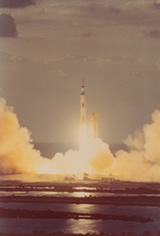 His childhood was not filled with any specific career goal, but his attraction to space may have started then. “When I was growing up as a kid, I did live for six years in Florida because my dad worked on the Apollo program, so I saw all those missions,” he says. “Maybe that’s where I got my interest in space.”
His childhood was not filled with any specific career goal, but his attraction to space may have started then. “When I was growing up as a kid, I did live for six years in Florida because my dad worked on the Apollo program, so I saw all those missions,” he says. “Maybe that’s where I got my interest in space.”
The change in subject matter was not difficult for Shelton when he switched departments. The challenge was the amount of software programming he had to do. “The fact that I was programming all the time as opposed to part-time was the change,” he says. “And I’m better as a part-time programmer than as a full-time programmer, because I just don’t have the experience that someone who does it all the time for years. I contributed, but I was able to fall into a niche where I could use my software skills while doing analyst work, which was a better match.”
MESSENGER is Shelton’s third major mission. His first was the Midcourse Space Experiment (MSX), which was the first system to demonstrate technology to identify and track ballistic missiles during their midcourse flight phase. He also worked on the Near Earth Asteroid Rendezvous (NEAR) mission, which sent the first spacecraft to orbit, land on, and send data from the surface of an asteroid.
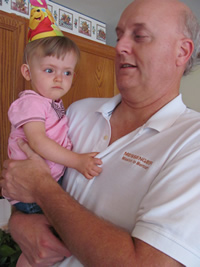 Shelton compared his work on MESSENGER to that on MSX and NEAR, saying, “It’s very similar to what I did on NEAR. It’s not so similar to MSX, although there is some overlap.” NEAR was so similar because its basic operational system was used for other subsequent missions including MESSENGER. On MSX, Shelton began on the ground software team and evolved into performing analyst work on the operations team. He notes that it was a different type of mission (Earth orbit) from MESSENGER or NEAR, so some different work was required.
Shelton compared his work on MESSENGER to that on MSX and NEAR, saying, “It’s very similar to what I did on NEAR. It’s not so similar to MSX, although there is some overlap.” NEAR was so similar because its basic operational system was used for other subsequent missions including MESSENGER. On MSX, Shelton began on the ground software team and evolved into performing analyst work on the operations team. He notes that it was a different type of mission (Earth orbit) from MESSENGER or NEAR, so some different work was required.
“We’re hoping MESSENGER is going to fulfill its mission by getting into orbit and collecting data as long as it can,” Shelton says. “The mission is for a year but it can probably go longer than that as long as somebody’s willing to pay for it. So we would like to just keep it going as long as we can. It’s an asset. Let’s use it.”
His favorite part of his job is seeing his work in action. “Just the fact that you’re putting together command sets that are actually going to fly on a real spacecraft, that’s just kind of cool.”
Shelton lives in Ellicott City with his wife, Becky, and has four children and one grandchild.
Highlighted Team Member: Kim Ord
Engineer Helps MESSENGER Maintain Balance Between Staying Cool and Staying Powered
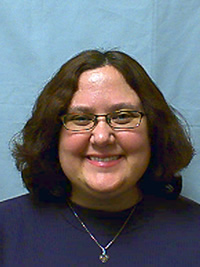
Kim Ord worked on the International Space Station (ISS) at the NASA Johnson Space Center in Houston, Texas, for ten years. When Houston’s heat became unbearable, she moved to Maryland to work on MESSENGER at the Johns Hopkins University Applied Physics Laboratory (APL) in Laurel.
Ord is the power and thermal mission operations analyst for the spacecraft’s mission operations team. She works with the subsystem engineers to decide how to operate the power and thermal systems, including spacecraft load management and heater operations. Her team also sets boundary lines for the guidance and control team to position the solar arrays – a delicate balance between maintaining safe temperatures and generating sufficient power.
A typical day for Ord depends on whether or not the team has a real-time contact with the spacecraft and whether she is involved with any activities that day. “We do periodic updates to the solar array positions as the distance between the spacecraft and the Sun changes to keep them from getting too warm. You have to off-point them as you get closer to the Sun,” she says. If managing the solar arrays is one of the activities for the real-time contact, Ord will spend hours – sometimes an entire day – in the Space Science Mission Operations Center with the real-time flight controllers. If she is not involved in a contact, she works in her office plotting data or planning for orbiting Mercury.
As a child, Ord was interested in NASA and wanted to be an astronaut for a while. After earning her bachelor’s degree in Electrical Engineering from Iowa State University, she joined the United Space Alliance to work as a power systems flight controller in mission operations for ISS. She started a year before the ISS’s first module was launched in 1998. She visited the NASA Kennedy Space Center while the module was still on the ground. “Besides the astronauts, I’m probably one of the few people who can say I’ve been inside of parts of it,” she says. “That was really cool.”
After ten years of Houston heat and after most of ISS’s assembly was completed, Ord was looking for a change. She started at APL in February 2008 when she was hired to work mission operations for MESSENGER’s power and thermal systems. Ord says that it is different to work on an unmanned rather than a manned mission. “In some ways, it’s a lot less stressful,” she says.
Compared to Earth orbit, MESSENGER has a long data transmission time – up to 12 minutes one way – which means that the mission operations team cannot command most dynamic operations on the spacecraft in real time. “You have try and test or anticipate what’s going to happen, then you build an operation into the command sequence, then the spacecraft executes the sequence, and a lot of times you don’t know whether the sequence has worked until the operation is over,” she says. “So that can be challenging because you’re sitting there watching the telemetry and you know in your mind that what you’re seeing happened 5, 10, or 15 minutes ago, but you’re watching it like it’s happening right then.”
Ord notes another important difference between the mission operations for MESSENGER and ISS is the amount of collaboration. She says that there is close collaboration on MESSENGER between the subsystem engineers and members of the mission operations team because many of them are still present at APL. “I can talk to the guys who did some of the designing,” she says. Having this corporate knowledge is better for the spacecraft because it means troubleshooting a problem is easier.
Everyone working on MESSENGER is looking forward to its entry into Mercury’s orbit, and Ord is no exception. Once in orbit, there are going to be many more science activities and ground contacts. There were little peaks of activity during the flybys, she says, but ground activity during orbit is going to be one year-long flyby.
“The flybys that I’ve been here for have all had solar eclipses under 20 minutes long, so you have to do some small power-downs but not a lot – not really intrusive things,” Ord says. “But when we get to orbit we’ll have ones that are over an hour long, so you’ll have to do things like shut down the science instruments and hope the battery …” Ord trails off and finishes her thought with crossed fingers.
The spacecraft has been working flawlessly so far, and everyone – including Ord – just hopes it keeps working so well.
by Lydia Zuraw
Highlighted Team Member: Dan O'Shaughnessy
Engineer Keeps MESSENGER in the Right Position at the Right Time

As the lead engineer of the guidance and control (G&C) team for the MESSENGER spacecraft, Dan O’Shaughnessy works continually to ensure that the spacecraft and its instruments are in the right position at the right time.
The G&C team is responsible in particular for orienting the spacecraft so that its sunshade always points toward the Sun. “To make sure the rest of the spacecraft stays nice and cool, it has to be tucked in behind the sunshade,” O’Shaughnessy says.
Maneuvering MESSENGER in space is a bit different than it would be on Earth. O’Shaughnessy and his team are able to reorient the spacecraft in three dimensions with the help of its internal wheels that exchange momentum with the body so that the probe can rotate. “Spinning one of the wheels causes the spacecraft to turn in the opposite direction,” O’Shaughnessy says. “By precisely controlling the spin of these wheels, MESSENGER can always keep the sunshade directed toward the Sun and allows the cameras and other instruments to remain pointed at Mercury.”
O’Shaughnessy says he was always interested in becoming an engineer. Growing up, he loved to tinker with mechanical objects. He was born and raised in Missouri and remained in that state for college. He attended the University of Missouri for both his bachelors and masters degrees in mechanical engineering and aerospace engineering.
Problems dealing with aerospace interested O’Shaughnessy in college because they challenged him. He said that his involvement in the field started because of his research advisor in graduate school, “who was very plugged into the space community.”
After interning with NASA and finishing graduate school, O’Shaughnessy joined the Space Department at the Johns Hopkins University Applied Physics Laboratory (APL) in 2000. He moved to Maryland for the job but loves the area and says that it was one of the factors that influenced him to take the position. He now lives in Silver Spring with his wife of five years, Judy.
The majority of his time has been spent on MESSENGER, but he has also worked on STEREO and New Horizons and several spacecraft concept studies. His work on the other projects has been similar to that on MESSENGER but has also included some trajectory analysis.
His near-term goal for MESSENGER is to see the spacecraft safely enter orbit about Mercury. He says that there are still some hurdles to overcome and a lot of work ahead but that he is looking forward to its fruition. “When you see something for which you spent a lot time working and designing and planning actually pay dividends, and the scientists come back with their pictures and say ‘we learned this about the craters or volcanoes that used to exist,’ it is pretty rewarding,” he says.
O’Shaughnessy says he was surprised by how much of what he learned in school is directly applicable to what he now does on a daily basis. “It was kind of nice because I found through graduate school that I was really interested in that sort of thing, so coming here was a validation that I got into the right field.”
As much as he learned in college, O’Shaughnessy is still learning from his colleagues. He says that his favorite part of working on MESSENGER is the camaraderie of the team. He appreciates getting to know his colleagues and learning from people who do different work on the same mission.
“I spend a lot of time working on MESSENGER, learning about how to design and build and operate a spacecraft,” he says. “I’d like to take that knowledge and reapply it to some new problems —whether that’s specifically a new mission or maybe just more research-oriented goals. A lot of people along the way taught me a lot of useful and interesting things, and so I’d like to be able to pass that type of guidance on to the next generation of folks who are going to work on the same sorts of problems.”
by Lydia Zuraw
Highlighted Team Member: Ray Espiritu
MESSENGER Engineer Helps Manage Probe's Data
Like many young boys of his generation, MESSENGER Team Member Ray Espiritu grew up wanting to fly through space and to design video games.
“I grew up in Hawaii, and I think because of the smallness of the island I had big dreams of going out and seeing the world,” says Espiritu, a satellite mission operations engineer. “Then in middle school I had big dreams of becoming an astronaut and going into space. But I soon realized that my lack of perfect vision and color blindness would probably prevent me from becoming an astronaut.”
A friend suggested he pursue aerospace engineering, “since they were the ones in mission control - which was the next closest thing to being in space,” he says. “I was good in science and math and I loved calculus, so I figured this was a pretty good career choice.”
Espiritu ultimately earned a B.S. in mechanical engineering because Yale - his school of choice - did not have an aerospace engineering program. Afterwards, he enrolled in an astronautical engineering program at George Washington University’s Joint Institute for the Advancement of Flight Sciences in Hampton, Va.
“All the courses were taught onsite at the NASA Langley Research Center, and students could take on real-world research projects that were either part of ongoing projects at the center or from NASA space missions,” he says. “Once I got started with my research project, analyzing data from the Magellan spacecraft, I was hooked. I knew from then on that I would stay in my field and work on space missions as long as I could.”
Espiritu worked as a mission planner for the MSTI-3 and Iridium satellite programs, and as a software engineer supporting the Interim Control Module/Radio Frequency Branch of the Naval Research Laboratory before joining Applied Coherent Technology (ACT), Inc., in 2000 to support a variety of projects, including the MESSENGER mission. Alongside Chris Hash and Erick Malaret of ACT, which is based in Herndon, Va., Espiritu created the data processing scheme for MESSENGER’s Science Operations Center (SOC) at APL.
The SOC, tucked away in an office park east of APL’s main campus, is the integrated set of subsystems and personnel whose mission is to obtain, provide, and preserve the science that fulfills objectives of the MESSENGER mission.
Espiritu and his colleagues at ACT are responsible for the data management and analysis side of the SOC. “This side of operations includes the computer hardware and software that takes raw telemetry forwarded by the Mission Operations Center and turns it into raw science data that is accessible by the scientists,” he explains. “It also takes calibrated or reduced data generated by the science team and archives it so that these data are accessible by the MESSENGER Project.”
The SOC also gives users several different options for accessing the data. “They can perform file browsing over the Web, perform searches on the data by using a Web search tool, and view plots of the data,” Espiritu says. “Soon, we hope to enable users who want to exploit more advanced data browsing and plotting capabilities.”
The SOC also archives the data in specific file formats and directories that satisfy the requirements for delivery of the data to the NASA Planetary Data System, which handles the long-term archiving and distribution of data from NASA missions.
Espiritu, who has been with the MESSENGER mission since its inception, says the challenges he faces in the SOC are constantly changing. “The initial challenge was trying to get the SOC software operational fast enough to process the flood of data from the first flyby,” he says. “That challenge was met by adding more hardware and making the software take advantage of it to spread out the processing load.”
As the spacecraft moves farther from Earth, there are longer periods between data downloads. “This schedule led to the challenge of implementing an easy method of verifying whether science data at the SOC are incomplete, because not all the data have arrived or because something went wrong with the software,” he says.
There have also been quite a few flight software uploads to several instruments that have changed the science data that they produce. This in turn changes the data products that are created at the SOC, Espiritu says. “In some cases science data products were retired and replaced by entirely new science data products. In others a data product was slightly changed, which required that previous versions of that same product also had to be updated in order to maintain consistency throughout the whole mission.”
And through it all there continue to be more data analysis and visualization requests from the science team.
The job involves a lot of computer programming – not central to his educational background. But he discovered early on that most engineers have to do quite a bit of computer programming, particularly when trying to do data analysis or when modeling a complex system.
“Most of the software solutions that I have come up with for the MESSENGER mission are the result of interactions with the science and instrument teams,” he says. “My educational background allows me to skip past most of the ‘please explain to me what you mean in simple terms’ parts of the problem and lets me concentrate on how to turn a problem into a programming solution. General engineering knowledge also lets me examine the problem in ways a scientist would not think about and allows me to suggest alternate ways of solving the problem.”
This is the part he enjoys most about the job. “I like being able to collaborate with science team to help solve their problems,” he says. “Whether it is to help them visualize their data better or help them figure out how to create new data products.”
When he met his wife, Guinevere Que, in 1997, she didn’t believe that he was involved in space science. “When I asked her what she did for a living she told me she was a neurology nurse,” he says. “I panicked, thinking that she was involved in brain surgery, but quickly regrouped and told her I was a rocket scientist. She didn't believe me until I finally showed her some of the things I did.” They married the year before MESSENGER’s launch.
Espiritu’s 10-month-old daughter, Arianna, seems to have picked up his childhood curiosity of wanting to know how things work. “She touches and tries to open everything and would rather explore and play with the remote control, bang on the computer keyboard, and open/close a cell phone than play with her regular toys,” he says. “Which means she would rather play with whatever gadget her daddy is using. This leads her mother and I to worry that she'll be able to outsmart us and get away with anything.”
Still, if he had his druthers, he would design video games. “I caught the gaming and computing bug early when my parents gave me an Atari 2600 as a child,” he says. At 37, he’s still a huge fan. “My latest craze is playing Rock Band on the Xbox 360. I have gone from having no rhythm on drums to being able to play a lot of songs on expert level.” His virtual band is called Space Alert.
Highlighted Team Member: Carl Jack Ercol
MESSENGER Thermal Engineer Maintains Cool in Extreme Environs
The Mercury-bound MESSENGER spacecraft will be assaulted by temperatures as high as 700°F as it orbits the planet closest to the Sun, and the only thing that will stand between its room-temperature science instruments and the blistering heat is a handmade ceramic-cloth quilt just one-quarter of an inch thick. The man largely responsible for making sure that MESSENGER would be able to stand up to such harsh heat once imagined he’d make his living in a darker, much cooler environment: the coal mining industry.
Carl Jack Ercol, MESSENGER’s lead thermal engineer, grew up in Ebensburg, a small town outside of Pittsburgh, Pennsylvania. “The area was very blue-collar – pretty much steel mills and coal mines,” he said. “My dad worked in the coal mines, and so since I was good in math, my original plan was to major in mining engineering.”
But as he made his way through studies at the University of Pittsburgh at Johnstown, he gravitated toward mechanical engineering instead. And it’s a good thing: by the time he had earned a Bachelor of Science degree in mechanical engineering in 1982, both the coal mining and steel industries had taken a nose dive.
After earning another degree – a master’s in mechanical engineering with a concentration in energy conversion and heat transfer from the University of Maryland – Ercol landed a job at the Naval Research Laboratory working on top-secret military space programs. “I was doing thermal engineering for this very high-level program, and I liked it,” he said Ercol.
The Johns Hopkins University Applied Physics Laboratory (APL) in Laurel, Md., hired him in 1991 as the lead thermal engineer for the Electronics Section of the Midcourse Space Experiment (MSX), a Ballistic Missile Defense Organization satellite experiment to map bright infrared sources in space. Ercol developed detailed thermal and geometry models of MSX’s electronics section, which were used to predict heater power requirements and to size thermal radiators; and he developed thermal models used for temperature predictions during MSX pre-flight testing at Goddard Space Flight Center.
In the years since, Ercol has amassed significant experience in making sure that spacecraft operate as designed throughout a variety of environmental conditions. He was the lead thermal engineer for the solar powered Near-Earth Asteroid Rendezvous (NEAR) Shoemaker spacecraft, which was the first Discovery mission. “The NEAR Shoemaker thermal design was difficult in that the spacecraft had a maximum solar distance farther than the orbit of Mars but inside that of Jupiter,” Ercol explained. “The elliptical orbit created a wide range of thermal environments that constrained the power available for heaters. The spacecraft eventually orbited and then successfully landed on the asteroid Eros.”
 Jack Ercol checks the condition of MESSENGER's ceramic-fabric sunshade after testing in the thermal-vacuum chamber at NASA's Goddard Space Flight Center in 2004. Credit: NASA/Johns Hopkins University Applied Physics Laboratory/Carnegie Institution of Washington.
Jack Ercol checks the condition of MESSENGER's ceramic-fabric sunshade after testing in the thermal-vacuum chamber at NASA's Goddard Space Flight Center in 2004. Credit: NASA/Johns Hopkins University Applied Physics Laboratory/Carnegie Institution of Washington. With these missions under his belt, Ercol was well-qualified to serve as the lead thermal engineer for a spacecraft bound for the closest planet to the Sun. He was among the original group of scientists and engineers who, in 1997, submitted a proposal to NASA for a mission to orbit Mercury. “Of course the big concern was how to affordably design a spacecraft that would be able to endure the hostile Mercury environment,” Ercol said. “The Sun shines up to 11 times brighter at Mercury than we see from our own planet.”
MESSENGER's first line of thermal defense is a heat-resistant and highly reflective sunshade, fixed on a titanium frame to the front of the spacecraft. Measuring about 2.5 meters (8 feet) tall and 2 meters (6 feet) across, the thin shade has front and back layers of Nextel ceramic cloth surrounding several inner layers of plastic insulation. While temperatures on the front of the shade could reach 370°C (700°F) when Mercury is closest to the Sun, behind it the spacecraft will operate at room temperature, around 20°C (68°F).
Radiators and one-way heat pipes are installed to carry heat away from the spacecraft body, and the science orbit is designed to limit MESSENGER's exposure to heat re-radiating from the surface of Mercury. MESSENGER will spend only about 25 minutes of each 12-hour orbit crossing Mercury's broiling surface at low altitude. The combination of the sunshade, thermal blanketing, and heat-radiation system allows the spacecraft to operate without special high-temperature electronics.
“So far the spacecraft has been thermally stable and very well behaved,” Ercol said. “During the two Mercury flybys last year, MESSENGER received only a fraction of the thermal emission from the planet that it will face during the orbital mission phase. The mission’s maximum solar heating, however, was experienced shortly after the second Mercury fly by, on October 15, 2008, when the spacecraft was subjected to 11 time the heat at Earth.” And the thermal subsystems, to Ercol’s satisfaction, performed as designed.
Up next is a third flyby in September 2009 and then Mercury orbit insertion in March 2011. “I’m enjoying seeing it work through the different sets of environments,” he added. “It’s been slow going from proposal to acceptance to launch – I’ve never been on a program this long – but it’s been very satisfying to grow with it.”
Shortly after MESSENGER’s launch in 2004, Ercol was assigned as lead engineer for the New Horizons mission to Pluto. “It doesn’t get any colder than that,” he said, referring to Pluto’s distance from the Sun of over 28 astronomical units (AU) at the nearest point in its orbit. The solar energy at Pluto is on the order of 1/1000 of the radiance received in Earth orbit.
The New Horizons spacecraft thermal design utilizes a “thermos-bottle” approach that minimizes heat leaks and uses the electronics waste heat to maintain the average structure temperature near room temperature. “It was very easy to understand the thermal challenges for New Horizons,” said Ercol, who compares the approach to that of NEAR Shoemaker. “NEAR Shoemaker and New Horizons followed a similar thermal philosophy because both were power constrained and both needed thermal designs that would minimize heat leakage and utilize spacecraft waste heat to maintain temperatures while not overheating when near the Earth,” Ercol explained.
While those two missions are en route, Ercol is involved in yet another mission to an extreme environment: the Solar Probe, which aims to study the streams of charged particles the Sun hurls into space from a vantage point within the Sun’s corona – its outer atmosphere – where the processes operate that heat the corona and produce solar wind. At closest approach the spacecraft will have to survive solar intensity more than 500 times what spacecraft experience while orbiting Earth; flying past the Sun at 125 miles per second, protected by a carbon-composite heat shield that must withstand up to 2,600°F and survive blasts of radiation and energized dust at levels not experienced by any other spacecraft.
“The Solar Probe job will be extremely difficult,” said Ercol, laughing. But his work on MESSENGER has informed the team’s approach to the challenge. Solar Probe’s power system will be fortified with heat-resistant technologies developed for MESSENGER. Preliminary designs include a 9-foot-diameter, 6-inch-thick, carbon-foam-filled solar shield atop the spacecraft body. Two sets of solar arrays would retract or extend as the spacecraft swings toward or away from the Sun during several loops around the inner solar system, making sure the panels stay at proper temperatures and power levels.
When he’s not in the hot seat, so to speak, Ercol spends a lot of time with his wife, Maureen, and two daughters: Marisa, age 15, and Carly, age 7. The physical fitness advocate starts each day with a workout. “I get up at 5:30 every morning and get at least an hour or so in,” he said. “There’s no better way to start your day.”
Highlighted Team Member: Nori Laslo
MESSENGER Mission Operations Lead
The Mercury Dual Imaging System (MDIS) on the MESSENGER spacecraft played a star role in the probe's January flyby of Mercury, snapping hundreds of high-resolution images of a portion of the planet never before seen by a spacecraft. While the scientists on the team decided what features to image, and the guidance and control team calculated the pointing of the instrument, Nori Laslo - at 29 one of the youngest members on the team - pieced together the commands to tell the camera precisely what to do.
"As the Mission Operations Lead and Instrument Sequencer for MESSENGER's Mercury Dual Imaging System (MDIS), I build the command sequences that configure and control the imaging system's wide-angle and narrow-angle cameras," Laslo explains. "The cameras have parameters - like auto exposure, manual exposure, exposure time, and filter type, for example-much like the cameras many people have at home."
Laslo graduated from Rutgers College in 2001, with a Bachelor of Science degree in Astronomy and Computer Science; but when she started college, she didn't set out to explore the cosmos. Her passion was music. "I started piano lessons at age 5," she explains. "Growing up, I was always balancing my school work with my music activities. I assumed that when I went to college, I would major in music."
However, it was not to be. "I studied with the same piano teacher for almost all of my training," says Laslo, a New Jersey native. "Once I got the technique down for a piece, my teacher encouraged me to then interpret the music in a way that felt right to me. She taught me, among many other things, that it was important to inject emotion into a piece, rather than to just mechanically play the notes on the page. I was worried I would lose that outlet for personal expression if I had to depend upon it to make a living."
Laslo had always been interested in topics related to math and science. A family vacation to the Kennedy Space Center in Florida was a pivotal experience for her. "After that trip, I knew I wanted to be a part of the space program," she says. "I wanted to contribute in any way I could."
So, she decided to pursue astronomy. Music became her minor and she found a further creative outlet as a member of the Rutgers University Marching Band, in which she played saxophone and later served as drum major. Since Rutgers didn't have a designated astronomy major at the time, Laslo worked with the dean and a number of advisors to create an individualized major that included courses in computer science, physics, astronomy, and math. "I hoped that the combination would give me the right training for mission operations," she says.
After graduating, she hit the ground running, landing a position as a Mission Planner for the Chandra X-ray Observatory at the Harvard-Smithsonian Center for Astrophysics. As a member of the Science Operations Team, she built Chandra observing schedules from proposed science requirements and the spacecraft's operational constraints.
"It was big-picture work," she explains. "We would try to figure out the best observing times for proposals within each observing cycle. We would put together a week's worth of observations based on the proposals' requirements, Chandra's observing constraints for that week, and the location of the targets in the sky. Then, we'd pass the list along to the Flight Operations Team to do the detailed scheduling."
It was the detailed scheduling - "piecing together the puzzle" she explains - in which she was becoming more and more interested. She received an opportunity to do just that in 2006, when she joined the MESSENGER team as the Instrument Sequencer and Mission Operations Lead for MDIS. In addition to building the sequences for cruise operations and planetary flybys, she is a liaison between the MDIS instrument team and the Mission Operations team for cruise and flyby sequence development and for planning of orbital operations.
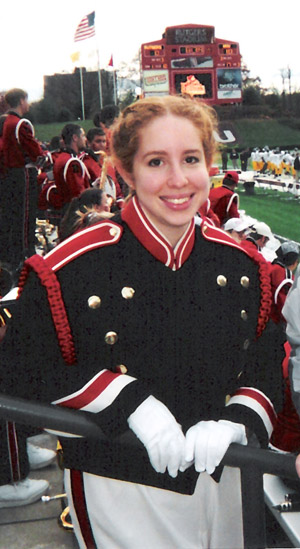 Like the rest of the MESSENGER team, Laslo is looking forward to March of 2011, when MESSENGER enters into orbit about Mercury. "We still have two more flybys of Mercury to complete before then," she says, "and executing them successfully is crucial to our mission success; but we are starting to get into the details of our orbital planning for 2011, and that is very exciting!"
Like the rest of the MESSENGER team, Laslo is looking forward to March of 2011, when MESSENGER enters into orbit about Mercury. "We still have two more flybys of Mercury to complete before then," she says, "and executing them successfully is crucial to our mission success; but we are starting to get into the details of our orbital planning for 2011, and that is very exciting!"
Laslo hopes to convey her excitement about MESSENGER's past and future accomplishments to the public by participating in public outreach programs whenever she can.
"I've always been interested in figuring out how to make math and science accessible to the public, especially to young people," she says. That interest drove her to undertake some graduate courses in Science Education and to serve as a teaching fellow in the Astronomy Department at Harvard University for a semester.
Since joining the MESSENGER team, she has given two talks on MESSENGER and the field of mission operations - one for high school students, and the other a public talk sponsored by IEEE, both back in her home state.
She says, "If, in addition to my sequencing work, I can convince a few people to go into mission operations, to stick with their math and science classes even when the going gets tough, or even just to support our country's space program and the important work being done by the scientists and engineers who are a part of it, I will feel that I have made a contribution."
by Paulette Campbell, Johns Hopkins University Applied Physics Laboratory
Highlighted Team Member: Brian Anderson
MESSENGER Deputy Project Scientist
 |
| Anderson, MESSENGER Deputy Project Scientist |
The fact that a mind-boggling array of mathematics and physics undergirds the planetary observation plans for MESSENGER’s operations when it enters Mercury’s orbit in 2011 is no drawback to the man behind the orbital strategy, an individual who has always been attracted to hard problems.
“When I was in high school, the textbook word problems bored me,” says MESSENGER's Deputy Project Scientist Brian Anderson. “When the teacher would issue these word problems, I realized that the hard part was not finding the answer. The hard part was figuring out what’s the right question. So I’d spend my time developing my own hard questions, and then answer those.”
For instance, if you know how many sheets of paper towels are in a roll, how thick is each sheet? Or, observing a tanker truck on a road trip: how many gallons does that truck hold, how much does it weigh, and how big are the footprints of the tires on the road? “From a very early age, I was more interested in asking the question first, not following recipes to answer somebody else’s questions.”
Anderson’s parents encouraged this type of independent thinking, he says. He recalls his father, a speech communications professor, dissecting the motives behind commercials. “We would be watching TV, see a commercial, and he would critique it, saying things like ‘what they are not telling you is this’ and ‘that’s a meaningless statement.’”
“My two brothers and I thought it was hilarious at the time, but we were learning valuable lessons in critical thinking,” he says. “Our parents encouraged us, from a very early age, to think for ourselves.”
Following this bent for spotting interesting questions and critical thinking, he went on to earn a bachelor’s degree in physics, mathematics, and religion from Augsburg College in 1982. “Physics and religion? Isn’t that an oxymoron? That’s what most people think”, Anderson says, “but the physical sciences are the way we understand nature objectively, and religion is how we find meaning to actually go about our lives.”
“Physics and math are basically problem solving formalized with precise and rigorous logic” he continues. “Religion deals with the hard experiences of living as a human being and is a discipline of applying rigorous and critical thinking to bear on the key questions of meaning and purpose. Both areas need rigor and critical thinking.”
Anderson went on to earn a Ph.D. in physics from the University of Minnesota in 1987. “I first took physics because my older brother had taken it, and he had a powerful influence on me,” he says. “But it soon became clear that I was good at it. It just came to me naturally,” he said. “I developed an aptitude for working with experiments and, through understanding the physics, improving and moving beyond what might have been in the test or instructions.”
Some of his earliest professional work involved research in magnetospheric physics analyzing magnetometer data from the Active Magnetospheric Particle Tracer Explorers/Charge Composition Explorer mission under a subcontract with the Johns Hopkins University Applied Physics Laboratory (APL).
After joining APL in 1988, Anderson worked on a number of missions, including the Near Earth Asteroid Rendezvous (NEAR) mission as instrument scientist for the magnetometer, an experience that he says fed into his desire to solve “really hard problems.” NEAR was not designed to be magnetically clean, so “it was an incredibly difficult problem to remove contamination signals from the data, but we did manage to get real science out of the magnetometer, and people didn’t think we could do that,” he says.
His success with that mission was one reason he was sought for the same role on MESSENGER. “In this case, the challenge was to make the spacecraft magnetically clean to ensure that once MESSENGER is in orbit around Mercury, the magnetometer will detect only the natural magnetic field of the planet — so we wouldn’t have to remove any signals due to the spacecraft.”
For two years Anderson worked with the engineering team, measuring all of the magnetic components used in the spacecraft, identifying all sources of magnetic signals in the spacecraft, and developing the right approach to reduce magnetic signals. The solar panels, battery, and power system are wired to ensure that the spacecraft power system doesn’t generate magnetic fields. The spinning momentum wheels are shielded magnetically to ensure that their magnetic field is insignificant. The propulsion valves include strong magnets, and the team had to figure out what magnets were needed and where to put them on the spacecraft to cancel out their magnetic field as well.
Once that was done and the spacecraft was successfully launched and on its way, the MESSENGER program managers needed someone with Anderson’s technical expertise to head up the advance science planning for MESSENGER’s orbital phase. After two years of working with a talented team of engineers and scientists, and more than two years before the scheduled orbit insertion, the team has a fully sequenced orbital plan in place.
Despite the demands of his scientific career and the MESSENGER program, Anderson, continues to pursue study in classical music as a lyric baritone. He started singing at a young age and continued as a high school student at Minnehaha Academy in Minneapolis. “The conductor of the Minnehaha Singers was Harry Opel, an excellent bass baritone, and he was a very powerful influence for me, instilling a love of music and performance,” he says. Anderson studied voice in college and continues to study at the Johns Hopkins University Peabody Preparatory. He’s been studying three years now at Peabody, and he’s won a number of competitions. Still, there are no regrets that he didn’t choose this option as a career.
“No question, I did the right thing. I’m a natural at physics and science, not music,” says Anderson, 49. “I’m getting a lot of satisfaction out of singing, while also doing my bit to advance understanding through my work on various science projects. MESSENGER is especially exciting because it is literally a new frontier in human exploration.”
by Paulette Campbell, Johns Hopkins University Applied Physics Laboratory
Highlighted Team Member: Jim McAdams
MESSENGER Mission Design Lead Engineer
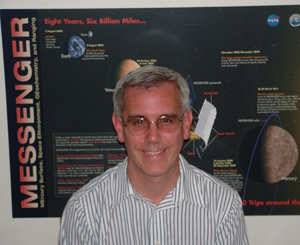 |
McAdams leads the team that designs
the trajectory for the MESSENGER spacecraft |
In the early 1980s, a young James V. McAdams was offered an opportunity to work as an engineering intern at NASA's Jet Propulsion Laboratory (JPL) in Pasadena, Calif. His experience working on the Galileo mission to Jupiter with top-notch mission design experts and planetary scientists soon convinced him that he wanted to pursue this type of work as a career.
He recalls interesting extracurricular activities during this time, including tours of California's Goldstone Deep Space Network antenna facilities and of the Palomar Observatory (led by planetary geologist and comet/asteroid expert Eugene Shoemaker), observing the formation and early activities of the Planetary Society, attending press conferences at JPL for the Voyager 2 Saturn encounter, and close-up views of two rocket launches and two of the first four Space Shuttle landings.
"My long-time interest in science and math led me to pursue degrees in aeronautical and astronautical engineering," says McAdams. "But it was my JPL experience that ignited my interest in planetary exploration."
McAdams worked at JPL every other semester during three of his undergraduate years, assisting Galileo mission designers with trajectory design graphics and software development for the spacecraft's orbital phase at Jupiter. He joined Science Applications International Corporation (SAIC) in 1986, fresh out of graduate school and three weeks before the Space Shuttle Challenger ended in catastrophe shortly after liftoff. "Along with the shock and sadness that everybody was feeling, I remember also wondering if the tragedy would have any impact on planetary exploration."
At SAIC, he worked for eight years on missions to asteroids, comets, the Sun, solar system escape, and most planets. "Designing the paths and correction maneuvers needed to efficiently deliver spacecraft to their destinations requires a lot of math and attention to details," McAdams says. He had the fortune of working alongside such stalwarts as Alan Friedlander, Bob Farquhar and David Dunham on Mercury orbiter, Pluto flyby, and Near-Earth asteroid rendezvous mission studies that led to actual planetary exploration missions.
"I was involved in the earliest phases of the Near Earth Asteroid Rendezvous (NEAR) mission and the formation of NASA's Discovery Program for low-cost planetary exploration while at SAIC," McAdams says. The NEAR mission was the first of NASA's Discovery missions and the first mission ever to go into orbit around an asteroid. Its name was later amended to NEAR-Shoemaker in honor of Eugene Shoemaker, who died in a 1997 car accident while on an annual study of impact craters in the Australian outback. Carolyn Shoemaker, Eugene's widow and an astronomer who holds the record for the most comets discovered by an individual, named asteroid 17408 after McAdams, citing his contributions to the NEAR mission.
As funding appeared to be drying up at SAIC for the work he was doing, McAdams joined APL to continue working on the NEAR mission. "I transitioned to APL as the lab's mission design capability was being formed," he says. In fact, McAdams was one of the first three people-Farquhar and Dunham being the other two-to comprise the Space Department's mission design group. "I enjoyed being part of a team that had regular meetings to discuss the design, assembly, testing, launch, and operation of a spacecraft," McAdams says. "An interesting aspect of mission design is being a primary source of information that helps people refine the design and operation of particular components and instruments of the spacecraft." His work on the NEAR mission resulted in five awards, including two NASA Group Achievement awards.
In 1996, about two years after arriving at APL, McAdams was asked to explore trajectory options for sending a spacecraft into orbit around Mercury. (Early trajectory design work for MESSENGER benefited from contributions of JPL's Chen-wan Yen, who was the first to identify the trajectory strategy used by MESSENGER.)
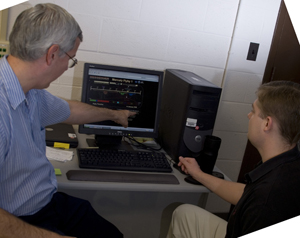 |
McAdams works with summer intern student Kevin Webb
to design a web-based visualization tool for
MESSENGER's first flyby of Mercury |
"Due to Discovery Program limits on launch vehicle capability and the timing of MESSENGER's launch, the trajectory is more complicated than most," McAdams says. For one, travel to Mercury and entry into orbit about Mercury requires an extremely large velocity change because of the planet's very high orbital velocity. Further, Mercury does not have an atmosphere that can be used to help slow the spacecraft on arrival; the spacecraft must use rockets to slow down enough to go into orbit. To make the trip feasible, MESSENGER makes extensive use of gravity-assist maneuvers. These reduce the energy (and thus fuel) requirements but greatly prolong the trip.
McAdams leads the team that designed MESSENGER's complicated trajectory, which includes a flyby of Earth, two encounters of Venus, and three flybys of Mercury before settling into its orbit around Mercury in 2011.
"It's a privilege to be a part of this team," McAdams says. "I can't think of any other career that so closely mirrors my temperament, talents, and interests."
As complicated as designing spacecraft trajectories is, McAdams has made it his business to make the information about MESSENGER's journey to Mercury accessible to the public. With the help of high school students and college interns, he has created a variety of web-based tools and animations "to communicate some of these complex technical aspects of the mission in ways that can engage the public," he says.
McAdams is a member of APL's Principal Professional Staff. He holds an M.S. in Aeronautical and Astronautical Engineering from Purdue University and resides in Baltimore with his wife, Vicki, and four children.
by Paulette Campbell, Johns Hopkins University Applied Physics Laboratory
Highlighted Team Member: Louise Prockter
Instrument Scientist
"A Planetary Geologist Keeps Her Eye on the Planets"
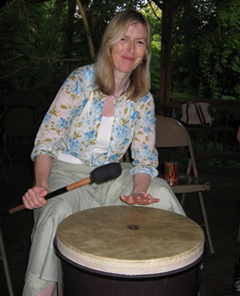 |
| Prockter relaxes with some African hand drumming. |
When Louise Prockter was in secondary school in North London's Winchmore Hill, she says they didn't teach things like Earth science. So when she finished school at 17, studying the surface of planets was the farthest thing from her mind. In fact, she spent a number of years working in marketing and advertising at newspapers in London before she decided to take a correspondence Science Foundation course through Britain's Open University.
"The course covered physics, chemistry, biology, and Earth science," Prockter explains. "It really grabbed my attention. I enjoyed learning about volcanoes and earthquakes and all of those natural things that go on in the Earth. I totally fell in love with it and realized I didn't want to spend my life working at my rather soulless job." Soon after taking that course, she gave up her job, sold her flat in London, and went to school full-time to study geophysics.
Even then, it wasn't until her final year in college that she took a course in planetary science. "Up until then, I never really had a clear idea of what I wanted to do," she says. "Miraculously, I ended up landing on my feet."
To be more precise, she landed in the Department of Geological Sciences at Brown University as a graduate student. With James W. Head, III, as her advisor, Prockter studied high-resolution sonar images of the Mid-Atlantic Ridge and visited the Pacific Ocean floor in the research submersible vehicle Alvin.
After analyzing a series of images of Europa taken by the Jupiter-orbiting Galileo spacecraft, Prockter discovered signs of surface folds, which are formed when the icy crust is squeezed like an accordion by gravitational forces. These folds provided additional evidence for predictions of a flexing Europan crust, which is alternately stretched and squeezed as the moon orbits Jupiter.
"I was very lucky in graduate school," Prockter notes. "My advisor gave me the opportunity to look at Galileo data that no one had seen before. I got so involved in that mission. I was interested in research, but I really wanted to work on a mission."
After graduate school, she immediately started working at the Johns Hopkins University Applied Physics Laboratory on the Near Earth Asteroid Rendezvous (NEAR) Shoemaker mission as a member of the camera team. In fact, she was one of the first people to see images of the rocky surface of the asteroid Eros as NEAR Shoemaker made its historic landing on the space rock.
As the lead instrument scientist for MESSENGER's Mercury Dual Imaging System (MDIS), Prockter is all set to train her keen eye on images of Venus, during the spacecraft's second flyby of that planet in June, and then on Mercury. "The MDIS will be among the most active instruments during the Venus 2 encounter," she says. "We will start taking images a few weeks before the flyby, and we are planning a full suite of operations 30 hours on either side of the encounter."
MESSENGER's trajectory is among the most complex ever undertaken by a spacecraft. When it's all said and done, the spacecraft will have traveled 7.9 billion kilometers, flying by Earth once, Venus twice, and Mercury three times before settling into Mercury's orbit.
"The pace of the mission can get quite hectic," Prockter says. "The spacecraft keeps moving no matter what's going on in your life, and balancing all that can be a challenge."
To keep a level head, Prockter practices yoga. She's also taken up African hand drumming, an art form she experienced years ago when she and a bunch of fellow students took a 15-day bus trip across the United States. "We rode and slept in an ancient 1950s bus," she says. "Every day, we'd stop at some place different. I got to see a lot of the country's national parks, if only briefly. One of the bus drivers had a hand drum, and every night we'd build a camp fire and he'd play it. I was inspired; I just really got into it."
She's not afraid to try new things, she says, a trait she finds common among her fellow scientists. "What we do is so obscure," she says. "We get an image of a planet's surface from a spacecraft and try to work out all the things that have happened to it over the last four billion years. The work is careful, logical, methodical, very rigorous. I think there is a part of all scientists that just wants to be playful and creative."
Her work thus far has taken her from one end of the solar system to the other. Ultimately, though, she wants to work on a Europa geophysical mission. When Galileo surveyed Europa in the late 1990s, Prockter and other scientists found that its surface was crisscrossed with fractures from mere meters to thousands of kilometers in size, and that many of these were formed of ice mixed with organic matter that probably came up from the subsurface of the moon. "It's one of the most alien landscapes I've ever seen," she says. "The surface is ice, but how far down is it frozen? How deep is the ocean we think underlies the ice shell? In many ways, Galileo raised more questions than it answered about Europa, and I would love to go back and learn more."
by Paulette Campbell, Johns Hopkins University Applied Physics Laboratory
Highlighted Team Member: Robin Vaughan
Lead Engineer for Guidance and Control
Though Robin Vaughan has nearly 20 years of experience with interplanetary missions, MESSENGER has nevertheless presented her with a host of new challenges. As the lead engineer for MESSENGER's guidance and control (attitude control) subsystem, Vaughan coordinated, planned and conducted tests for spacecraft integration through launch, and now continues to monitor the craft's performance in flight.
"Being a lead engineer was new for me," she explains. "I was also not working directly in attitude control before I came here, so MESSENGER was my learning-how-to-do-it experience."
These learning experiences have paved the way for her most recent endeavor: NASA Goddard's Radiation Belt Storm Probe (RBSP) mission, for which APL is building two satellites. The mission, which is part of NASA's Living with a Star Program, will investigate the effect of solar storms on Earth's magnetic fields and radiation belts. Collected data could theoretically be used to make "weather predictions" for space.
"RBSP is in the early development stages, so it's kind of like going back to the drawing board. It's almost in the stage that MESSENGER was in when I came here in 2000," she says.
Thus, as someone who splits her time between these two different missions, Vaughan's work tends to vary dramatically during any given week, depending on which project is demanding more of her attention. "When I do something for MESSENGER there's immediate feedback that it's doing these things that we want it to do, whereas with RSBP it's not as concrete," she says. "It's still so early that it's harder to see how the fruits of your labor will turn out further down the road."
Despite playing critical roles for two different projects, however, Vaughan seems to be at ease with splitting up her time and adapting her frame of mind to whichever mission she's working on at a given moment. "I enjoy having the balance," she says.
Vaughan predicts that her work on MESSENGER will make RBSP easier to tackle. "Now I know more about what the pieces are and how they're all supposed to fit together," she explains. "Hopefully, it'll be a smoother path for RBSP than it was for MESSENGER."
When pressed to pinpoint one aspect of her work as her favorite, Vaughan cites the prospect of discovering new information about the solar system as her favorite part. "I'm working on these spacecraft that go out and explore all of these places in the solar system that we don't know a lot about," she replies enthusiastically.
She also gets a kick out of watching her solutions to problems work in practice. "We'll say, 'Okay, this is how we can make the spacecraft do that', and then we'll actually see the data from the spacecraft when it's done it and know that it all went right."
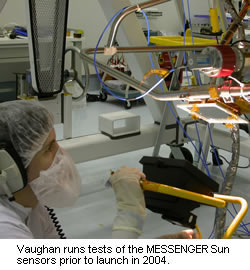 Prior to joining the Lab in 2000, Vaughan spent more than a dozen years researching, developing, and implementing navigation systems for a diverse array of spacecraft at Caltech's Jet Propulsion Laboratory in Pasadena, California. There, she worked on a number of high-profile spacecraft, including the Mars Pathfinder, Cassini, Galileo, and Voyager. She was an active participant in each stage of navigation system development, with a hand in everything from selecting data types, testing the ground tools, to flight operations.
Prior to joining the Lab in 2000, Vaughan spent more than a dozen years researching, developing, and implementing navigation systems for a diverse array of spacecraft at Caltech's Jet Propulsion Laboratory in Pasadena, California. There, she worked on a number of high-profile spacecraft, including the Mars Pathfinder, Cassini, Galileo, and Voyager. She was an active participant in each stage of navigation system development, with a hand in everything from selecting data types, testing the ground tools, to flight operations.
Vaughan is one of three APL winners in recent history to earn the Baltimore chapter of the American Institute of Aeronautics and Astronautics' Engineer of the Year award. She holds a PhD and an MS in aeronautics and astronautics from MIT, and resides in Columbia, Maryland.
By: Hayley Brown, Johns Hopkins University Applied
Physics Laboratory
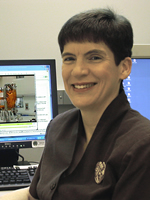 I decided at a very early age that I wanted to have a role in space exploration, which was perhaps not surprising since I grew up during the height of the Apollo Moon program. Heading to JPL immediately after graduate school gave me my first taste of interplanetary missions. After my first experience with the Voyager 2 Neptune encounter, I was hooked. I decided at a very early age that I wanted to have a role in space exploration, which was perhaps not surprising since I grew up during the height of the Apollo Moon program. Heading to JPL immediately after graduate school gave me my first taste of interplanetary missions. After my first experience with the Voyager 2 Neptune encounter, I was hooked.
I really enjoy being among the first people to see all the new data sent back from another planet and it's doubly rewarding when you feel you have been able to play a small part in getting the spacecraft to its destination. In a sense, I've been working my way backwards through the solar system, with Cassini at Saturn, Galileo in the asteroid belt, and Pathfinder at Mars. The opportunity to work on MESSENGER gave me the chance to add an inner planet to my list. I led the development of the spacecraft guidance and control (G&C) system. That subsystem ensures that the spacecraft maintains the proper orientation for protection from the Sun, for communicating with the Earth, or for pointing the science instruments at the planet.
I first heard the term "drinking from a fire hose" used to describe the educational experience at MIT. The term was certainly appropriate for me in that situation, but I have found it to apply equally well to some of my professional experiences. The MESSENGER G&C lead engineer position is perhaps the best example so far. I joined the team in September 2000, coming from 13 years of doing interplanetary navigation work at JPL where I did not have much direct interaction with spacecraft hardware. There was definitely a lot to absorb in switching over to a spacecraft subsystem with tightly knit hardware and software and also in coordinating the activities of a team that grew from three to a peak of six by the time we launched in 2004. Getting the spacecraft ready to launch was sometimes a wild ride, where we proved the truth of the statement "every minor detail is a major decision." There were many long days and nights struggling to meet the ultimate deadline imposed by the planets' orbital timing, which was (and still is) critical for getting MESSENGER to Mercury. The spacecraft development was a wonderful experience for me, proving that learning continues long after you leave school. I was privileged to work with many other talented people who taught me so much. I hope to take that pool of knowledge to other missions in the future.
I am also fortunate that work on the G&C system does not end with launch. Seeing the spacecraft perform the turns and burns as we designed it to do has been the most rewarding aspect of my work with MESSENGER. The first example of this came on launch day when the G&C system had to fire thrusters to get the proper spacecraft orientation after separation from the launch vehicle. The moments spent waiting for telemetry to arrive showing that the spacecraft had reached its proper orientation were quite nerve-racking. Since then, we have had many other memorable events, at least to a G&C engineer. We've put the spacecraft through a number of deep space acrobatics: rotating about all three body axes and even doing several "flips" and "flops" which switch the pointing of the sunshade relative to the Sun. We've fired all the thrusters, including the large main engine that we will use to insert into orbit around Mercury in 2011. We've had our first pictures and other data returned from the science instruments. I'm really looking forward to seeing what we will find at Mercury, as I know from personal experience that there is always something new and unexpected waiting to be discovered!
--Statement by Robin Vaughan about MESSENGER
Highlighted Team Member: Stanton Peale
Science Team Co-Investigator
Stanton Peale can't remember a time when he wasn't interested in the planets and gardening.
"I was raised poor in Indiana, and my family - by necessity - had a garden every summer," explains Peale, a Professor Emeritus and Research Professor of Physics at the University of California, Santa Barbara. "When I was 12, I worked on a truck garden south of Indianapolis. Truck gardens get their name from the fact that farmers who owned them hauled their produce to market in trucks. Each day, they would call up the place where they sold and ask them what they need, and haul it there."
Since then, he's always enjoyed raising things to eat, particularly things he could not buy in the run of the mill grocery store. "Tomatoes have always been my favorite," he says. "But I have raised tomatoes too many times in the same place, and they no longer grow well, probably because of a root parasite. Also, Santa Barbara now has a number of fine farmer's markets where you can purchase the most magnificent tomatoes. So the things that once motivated me [to garden] are no longer an issue."
He still tinkers around in the yard on Saturdays, he says. But much of his time is spent focusing on celestial bodies, specifically what moves them. Peale is a leading expert in planetary dynamics. He developed the technique by which MESSENGER can measure the state of Mercury's core. He will participate in the interpretation of the data defining the constraints on Mercury's rotation from the Mercury Laser Altimeter (MLA) and the gravitational field.
His interest in planets also dates back to his youth. "I remember being fascinated as a kid with the planets, and reading about them in this set of encyclopedias we used to have," he says.
He was a graduate student at Cornell in the early 1960s, when William E. Gordon, a professor of electrical engineering at Cornell University, realized his dream of building an instrument that would use radar to study the ionosphere, the uppermost region of the Earth's atmosphere, as well as objects in the solar system. It was the radar study of the planets that captured Peale's interest.
"I had just finished my master's when they announced that Gordon's Arecibo radar was going online," he said. "They said it was going to reveal lots of secrets about the planets, their surfaces. It seemed so exciting and romantic at the time. If Marshall Cohen had not gone on sabbatical leave when I was choosing an advisor, I would have become a radar astronomer."
Peale went on to pursue a Ph.D. in planetary physics
and is well-known for his contributions to the dynamics of solar-system
bodies, especially for calculations leading to the prediction of
volcanic action on Io, dramatically verified by Voyager photography.
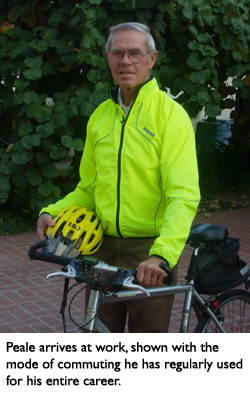 Aside from his work on MESSENGER, Peale is dabbling in other research projects, such as the dynamics and origin of extra solar planetary systems and the origin and evolution of multi-planet and multi-satellite systems where their orbital periods are in ratios of small whole numbers. Examples of the latter are the 3:4 resonance for Saturn's satellites Titan and Hyperion and the 1:2:4 resonance for Jupiter's satellites Io, Europa, and Ganymede. Aside from his work on MESSENGER, Peale is dabbling in other research projects, such as the dynamics and origin of extra solar planetary systems and the origin and evolution of multi-planet and multi-satellite systems where their orbital periods are in ratios of small whole numbers. Examples of the latter are the 3:4 resonance for Saturn's satellites Titan and Hyperion and the 1:2:4 resonance for Jupiter's satellites Io, Europa, and Ganymede.
He's been published in several journals and been honored with prestigious awards such as the American Astronomical Society's Dick Brower Award and being named a fellow of the American Geophysical Union. In 1982, he even had an asteroid named after him. Still, he says, he wishes he were smarter.
"There are innumerable things I want to look into, but it takes so long to do so," he says. "I've always wished that I could cull ideas much more rapidly than I do."
By: Paulette Campbell, Johns Hopkins University Applied
Physics Laboratory
|
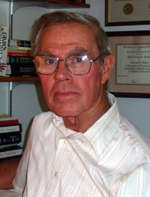 I proposed a scheme for determining whether or not Mercury has a molten core. My task on the MESSENGER Science Team so far has been to ensure that this scheme will actually work. Radar measurements from the Earth have already suggested that the existence of a molten core in Mercury seems assured. It will be very exciting when MESSENGER verifies these numbers and determines Mercury's gravitational field to complete the full experiment. It is going to work. I proposed a scheme for determining whether or not Mercury has a molten core. My task on the MESSENGER Science Team so far has been to ensure that this scheme will actually work. Radar measurements from the Earth have already suggested that the existence of a molten core in Mercury seems assured. It will be very exciting when MESSENGER verifies these numbers and determines Mercury's gravitational field to complete the full experiment. It is going to work.
The fun starts a little over a year from now, when MESSENGER makes its first flyby of Mercury. I will participate in the interpretation of the gravitational field and laser altimetry data. Together with the information about the interior obtained from the rotation state, I'll assist in the construction of geophysical models of the entire planet, models that will be further constrained by the magnetic field, magnetosphere, surface features, and surface and atmospheric compositions. In giving such theoretical support to the MESSENGER mission, I will have the fun of participating in the interpretation of the unique data about Mercury that will be obtained.
Those data will have been obtained due to the very hard work of my colleagues
on the MESSENGER Science Team and the engineers and managers at APL. Numerous
MESSENGER team members will have designed and built the instruments, tested
and refined their designs in the lab, monitored their well-being after launch,
and flown the spacecraft from the Earth to orbit around Mercury, all under
the able oversight of PI Sean Solomon. I marvel at their expertise and competence,
and their hard work makes me feel a little guilty about my free ride to Mercury.
--Statement by Stanton Peale about MESSENGER
Highlighted Team Member: T. Adrian Hill
Fault Protection Lead for MESSENGER
Being a critical player for two different space missions simultaneously should be a challenge for anyone, but it doesn't seem to faze T. Adrian Hill, who serves as the fault protection lead not just for MESSENGER, but also for the New Horizons mission to explore Pluto-Charon and the Kuiper Belt.
"I feel very fortunate that I am able to work
on two spacecraft that are going to opposite ends of the solar system,” he
says. “How many people can make a claim to that?”
The fault protection system is a spacecraft’s
last line of defense against various obstacles, many of which would spell
disaster without it. Thankfully, however, Hill and his teams have implemented
a “system of rules and responses” that will enable each craft
to detect and isolate on-board faults and to take corrective action accordingly.
As such, Hill’s contributions to both projects are indeed critical.
Given the extent of his experience, however, perhaps
Hill’s competent and calm demeanor should come as no surprise. Though
he joined APL’s Space Department in 2000, Hill has been developing
flight software for NASA-sponsored projects for more than a dozen years
now. One of his most memorable experiences was working as a flight software
lead for the Hubble Space Telescope.
"I had the opportunity not only to lead the software development, but to actually watch on the video as the astronauts removed the old computer and installed our computer with our new software," he explains. "Watching from the ground as the software came up and running and started operating. it was a satisfying moment."
Prior to launch, Hill served as MESSENGER’s flight
software lead, developing systems for the spacecraft’s flight processors.
After lift-off, when MESSENGER
found itself in need of fault protection, Hill was happy
to volunteer. Among other things, it will allow him to observe
the software that he developed during MESSENGER’s initial stages in
practice.
"It will be very satisfying, once we get to Mercury and have a successful mission, to have been able to see it through from start to finish," he says with conviction.
Come fall, though, when he’s not safeguarding
spacecraft against slipups, Hill likes to indulge his first love: football.
As a college football referee, he spends his Saturdays moonlighting around
the country officiating games.
 “It’s my big passion. I started ref’ing
football back in 1990 - little league youth
ball, then high school ball — and now I’ve been fortunate enough
to work college football,” he says. While he concedes that he’s
not always the most popular person, Hill thoroughly enjoys his side job
nevertheless. “It’s my big passion. I started ref’ing
football back in 1990 - little league youth
ball, then high school ball — and now I’ve been fortunate enough
to work college football,” he says. While he concedes that he’s
not always the most popular person, Hill thoroughly enjoys his side job
nevertheless.
A master of many trades, Hill juggles this diverse array
of activities with a panache that hasn’t gone unnoticed. This year,
he became the third APL employee in recent history to earn the Baltimore
chapter of the American Institute of Aeronautics and Astronautics (AIAA)
prestigious “Engineer of the Year” designation. He has also
been the recipient of the Raytheon ITSS Peer Award, the NASA Goddard Space
Flight Center Special Payloads Division Dedicated Service Award, and the
NASA Goddard Space Flight Center Group Achievement Award.
Hill is a member of APL’s Principal Professional
Staff. He holds an M.S. in computer science from The Johns Hopkins
University and resides in Bowie, MD with his wife VaLerie.
By: Hayley Brown, Johns Hopkins University Applied
Physics Laboratory
|
 I was the MESSENGER Flight Software Lead from the mission's early design stage through launch. During the development, integration and launch preparation of the spacecraft, the Flight Software Lead role allowed me to work closely with many of the talented people working the mission. The Flight Software interfaces with nearly all of the other subsystems on the spacecraft in some way. So leading that effort exposed me to many of these systems. I was the MESSENGER Flight Software Lead from the mission's early design stage through launch. During the development, integration and launch preparation of the spacecraft, the Flight Software Lead role allowed me to work closely with many of the talented people working the mission. The Flight Software interfaces with nearly all of the other subsystems on the spacecraft in some way. So leading that effort exposed me to many of these systems.
Being able to support the launch was also very rewarding. I started on the MESSENGER program when I joined APL in the spring of 2000 while the program was still in its infancy. We grew the development team from two team members (when I started) to over 10 team members during the height of the development effort. So I had the opportunity to see the mission from initial development through the successful launch. The day of the launch was the most rewarding moment to date. There was a great feeling of satisfaction in successfully achieving our first contact with the spacecraft after launch from the Mission Operations Center. So many things have to perform correctly in order for that to happen. I still remember the big cheer in the MOC when the displays turned green indicating that we were acquiring data from the spacecraft.
After launch, I assumed the Fault Protection and Autonomy Lead role. This was a great opportunity to remain on the MESSENGER program and follow the mission through orbit insertion in 2011 and the end of orbital operations in 2012. In this role, I am responsible for the system that we have on-board to monitor spacecraft health and perform corrective actions to maintain spacecraft safety. We typically contact the spacecraft three times per week during the cruise phase to Mercury and this on-board safing system is the first line of defense in maintaining the spacecraft. We have had a couple of faults since launch and the system has performed as designed by taking the proper corrective actions.
Of course the job is not done until we complete orbital operations at Mercury and there are still numerous challenges ahead.
--Statement by T. Adrian Hill about MESSENGER
Highlighted Team Member: Robert Strom
Science Team Co-Investigator
"Mercury Science: From Mariner 10 to MESSENGER"
Robert Strom has worked in the field of lunar and planetary
surfaces for more than four decades, but when he attended college
in the mid-1950s, there was no such field as planetary geology
or “planetology."
“Mostly scientists focused on the stars, the sun and the galaxies,” says
Strom, 72. “Back then, scientists has these crude ideas about the
structure of other planets. They weren’t considered interesting; in
fact, there was very little in the literature about them. What was there
was certainly sketchy.”
So his first job out of graduate school was as a petroleum geologist for
an oil company. “Not as sexy as the planets, I’d say; but that’s
what I was trained to do,” he says. The company dispatched Strom to
Pakistan to do oil exploration: conducting geological surveys of the Chittagong
Hill Tracks of Bangladesh, India and the Arakan Yoma of Burma, and drilling
test wells in the plains of Bangladesh. “The Hill tracks and Arakan
Yoma were largely unknown territory at that time, and inhabited by natives
who rarely came in contact with outside people,” Strom says. “I
had adventures totally unrelated to my job with snakes, tigers, elephants
and head-hunters … that’s right head-hunters!”
While in Pakistan, Strom came across Patrick Moore’s “Guide
to the Moon,” first published in 1953. It was a slim, one-volume summary
of the geography, geology and nature of the moon, Strom says. “Moore
had a lot of crazy ideas at the time, but I thought, ‘that would be
fun to do … to study the moon.’” And as luck would have
it, the University of California, Berkeley was looking for a geologist to
help them design an instrument to measure the elemental composition of the
moon.
Strom worked on that project for two years, and subsequently doggedly pursued
his interest in the study of planetary surfaces. He began to follow the
work of Gerard C. Kuiper, the so-called Father of Planetary Science who,
among other discoveries, predicted the existence of the Kuiper belt in 1951.
Kuiper founded the Lunar and Planetary Laboratory at the University of
Arizona in 1960. “He was about the only astronomer back then who was
looking at the moon and the planets,” Strom says. “I wrote
him at Arizona and asked if he had a post available. In 1963, he invited
me to come out and talk and offered me a job. I’ve been there ever
since.”
Shortly after that, the galaxy opened up. The Mariner 4 spacecraft, launched
on July 14, 1965, sent back the first-ever close-up images of Mars. Almost
instantly, the Red Planet, and by extension the other planets, became objects
worthy of further study, and Strom sunk his teeth into exploring the surfaces
and interiors of the planets. Over the decades he’s worked on several
space flight programs, including Apollo 8, 10 and 11 (Moon); Mariner 10
(Venus/Mercury); the Voyager missions to Jupiter, Saturn, Uranus and Neptune;
and now MESSENGER.
As Strom tracks MESSENGER’s progress toward Mercury – a place
he refers to as “pure hell,” in terms of temperature – he’s
turned some of his attention toward another place that’s heating up:
Earth. He’s just finished work on a book on global warming, tentatively
titled: “Hot House: Climate Change and the Human Condition.”
“The amount of studies that have been done on this issue is almost overwhelming,” he
says. “There’s no doubt that [global warming] is happening and
that humans are causing it.”
He was inspired to write the book after the release of a 2001 report
by the Intergovernmental Panel on Climate Change that predicted that unless
we curtailed air pollution, the long- and short-term effects of global warming
would worsen, causing horrific implications for Earth, such as a decrease
in world-wide food production, rising sea levels and increased droughts
and floods.
His book summarizes the issue, going back 700 million years to the present. “I
worry about what my grandchildren will face in about 50 or so years,” he
says. “That’s why I had to write this book.”
His foray into global warming is really not that much of a stretch
from his true love: the planets. “Planetary geology has taught me to
look at planets as a whole,” he says. “Even the oil exploration
I did early in my career involved looking at an element of Earth, the planet.
And when you look at Earth as a whole, you have to look at temperature and
environment and ecosystem and the like; it’s part of that planet’s
geology.”
By: Paulette Campbell, Johns Hopkins University Applied
Physics Laboratory
|
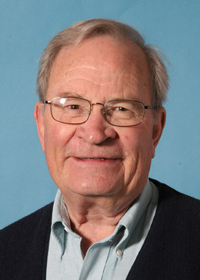 About 30 years ago in early1976 the Mariner 10 science team had a meeting at JPL to discuss the results of the Mariner 10 flybys of Mercury, and to begin initial plans for a Mercury orbiter. Mariner 10 was a reconnaissance mission intended to explore Mercury for the first time and gather enough information on this unknown planet to prepare for an orbiter mission to explore the planet in depth. We knew there were trajectories by Venus and Mercury that would slow the spacecraft enough to put it in orbit with a conventional retro-rocket. At that time I never dreamed I would have to wait 32 years before I would next lay eyes on spacecraft images of the planet, or 35 years before I would see a spacecraft orbit Mercury. About 30 years ago in early1976 the Mariner 10 science team had a meeting at JPL to discuss the results of the Mariner 10 flybys of Mercury, and to begin initial plans for a Mercury orbiter. Mariner 10 was a reconnaissance mission intended to explore Mercury for the first time and gather enough information on this unknown planet to prepare for an orbiter mission to explore the planet in depth. We knew there were trajectories by Venus and Mercury that would slow the spacecraft enough to put it in orbit with a conventional retro-rocket. At that time I never dreamed I would have to wait 32 years before I would next lay eyes on spacecraft images of the planet, or 35 years before I would see a spacecraft orbit Mercury.
The reasons it has taken so long for another Mercury mission is because the planet superficially resembles the Moon, and because a Mercury orbiter would be very expensive. At that time people were examining images from the Mariner 9 Mars orbiter (1971) and the new close-up Viking orbiter (1975) images. They were seeing fantastic surface features similar to some on Earth plus evidence of past water on the planet. They thought the money for a very expensive Mercury orbiter could be better spent on Mars or other planets.
Finally, we will be able to explore Mercury in depth with the very sophisticated MESSENGER spacecraft and answer many of the questions that have been nagging at me for over 30 years. These include the origin of its enormous iron core, the surface composition, the origin of its magnetic field and what it say about the interior, what is on 55% of the planet not seen by Mariner 10, and many more, including implications for the origin and evolution of all the terrestrial planets. I cannot express enough how thrilled I am to be a part the MESSENGER mission, and finally get a chance to revisit one of the least known planets in the Solar System.
--Statement by R. Strom about Mariner 10 and MESSENGER
Earlier Team Members and Team Photos
The MESSENGER mission spanned many years, from the selection of the mission in 1999 to the spacecraft's impact into Mercury in 2015. During this time, some key members of the MESSENGER team left the mission to pursue other projects, creating the opportunity for new individuals to join the MESSENGER team. On this website, the people listed under the Core, Science, Instrument, Engineering, Mission Operations, and Education teams reflect MESSENGER team membership as of 2016, when all data from the mission were archived in NASA's Planetary Data System and the MESSENGER mission came to an end. Listed below are individuals who were identified on earlier versions of the mission's website as filling key roles on the MESSENGER mission, prior to departing the MESSENGER team for other activities. Also below are group photos taken at major MESSENGER events.
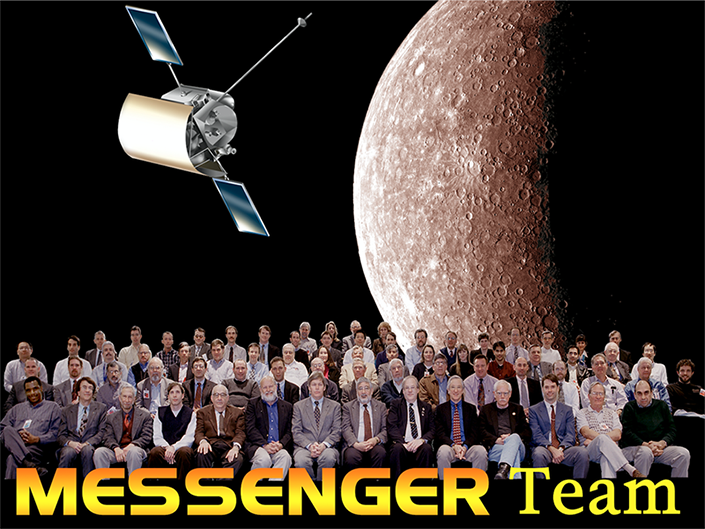 MESSENGER Science Team Meeting #3:
MESSENGER Science Team Meeting #3: Johns Hopkins University Applied Physics Laboratory, 8 December, 2000.
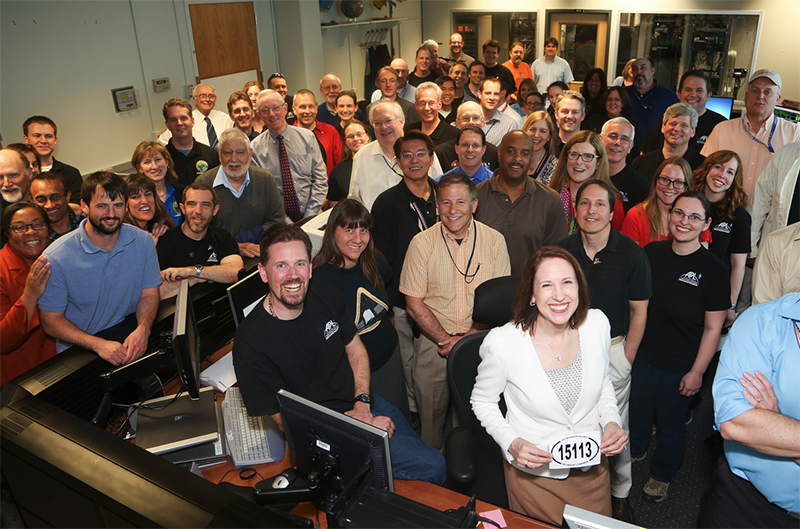 MESSENGER Impact into Mercury:
MESSENGER Impact into Mercury: Mission Operations Center, Johns Hopkins University Applied Physics Laboratory, 30 April, 2015.
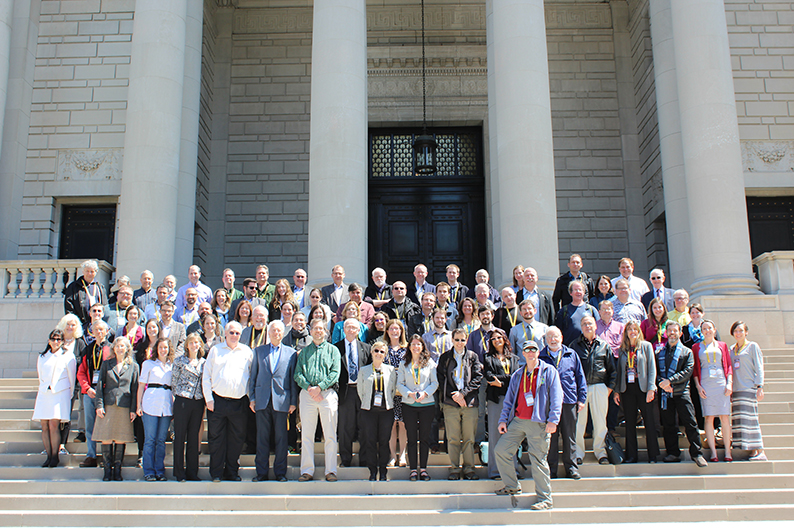 MESSENGER Science Team Meeting #36:
MESSENGER Science Team Meeting #36: Carnegie Institution for Science, Washington D.C., 13 April, 2016.
Earlier MESSENGER Team Members
David A. Artis, Mission Software Systems Engineer
Alice Berman, Payload Operations Manager
Bob Bokulic, RF Lead for Design
Louis P. Butler, Science Operations Center (SOC) Lead
Kim A. Cooper, Deputy Project Manager
George Dakermanji, Power Lead for Design
Robert W. Farquhar, Mission Manager
Karl Fielhauer, RF Lead for Test & Operations
Eric J. Finnegan, Mission Systems Engineer
Mike Furrow, Mission Operations Center Ground System
Ted Hartka, Mechanical Lead
Ken Hibbard, Mission Operations
Mark E. Holdridge, Mission Operations Manager, Critical Event Operations Manager
Doug Holland, Ground Software Lead
Ken Koontz, FSW Testbed Lead
Stan Kozuch, I&T Lead
Sean Laughery, Power
James C. Leary, Mission Systems Engineer
Stefano A. Livi, EPS Lead Scientist
Robert Lundgren, FIPS Sensor Lead Engineer
Shirley M. Malcolm, Education/Public Outreach Lead
Barry H. Mauk, EPPS Lead Scientist
Alan Mick, Science Operations Center
Bob Moore, Autonomy Lead for Design
Larry Mosher, Propulsion Lead
George D. "Pinky" Nelson, Education/Public Outreach Lead
Hien Nguyen, Ground System Lead
Geffrey Ottman, Integrated Electronics
Michael Paul, Spacecraft Systems Engineer
Clark Person, Power Lead for Test & Operations
Dave Persons, Structural Lead
Max R. Peterson, Project Manager
Edgar A. Rhodes, GRNS Lead Scientist
Elliot Rodberg, I&T System Manager
Andrew G. Santo, Mission Systems Engineer
Jay Smith, MLA Lead Engineer
Stephanie A. Stockman, Education/Public Outreach Project Manager and Team Lead
Tony Taylor, Navigation Lead
Michael Trela, Propulsion
Melissa Wirzburger, Thermal
Robin Vaughan, G&C Lead
| 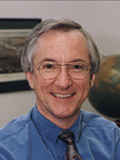
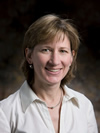
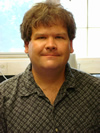


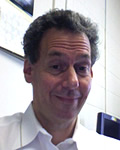
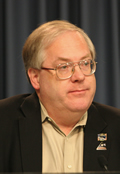
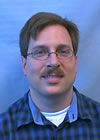
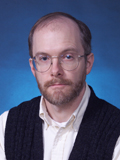



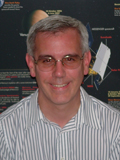
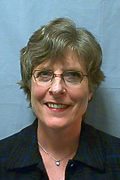

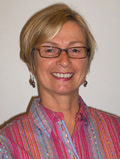
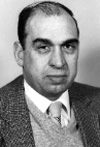

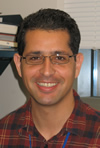
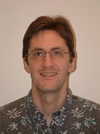
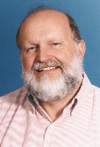
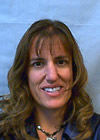
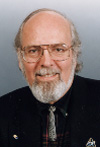
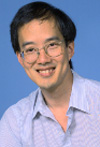
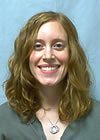

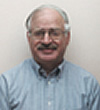
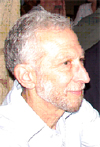
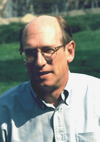

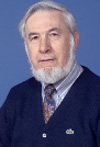
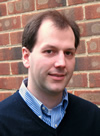

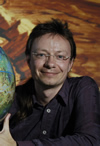
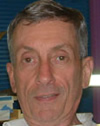

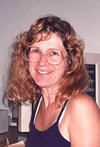
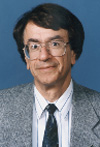

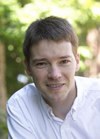
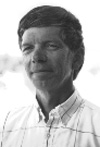
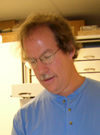
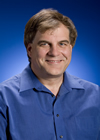
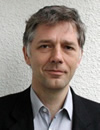
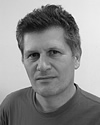
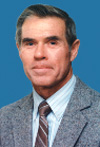


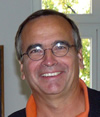

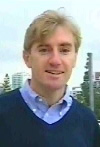
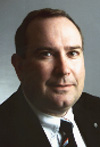
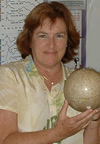

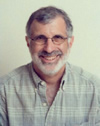
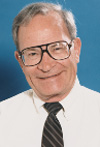
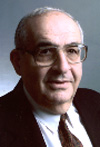
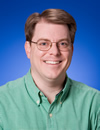
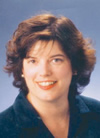
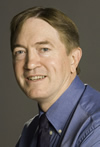
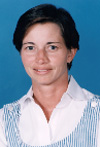



































































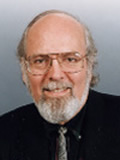
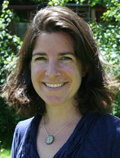
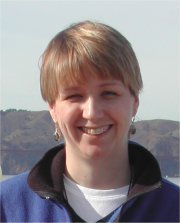

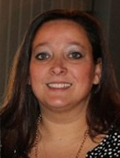


































 Susan Ensor with her father, Phil, circa 1986.
Susan Ensor with her father, Phil, circa 1986. Susan Ensor with her son, Alex, then 3 years old.
Susan Ensor with her son, Alex, then 3 years old. Susan Ensor at her piano at home.
Susan Ensor at her piano at home.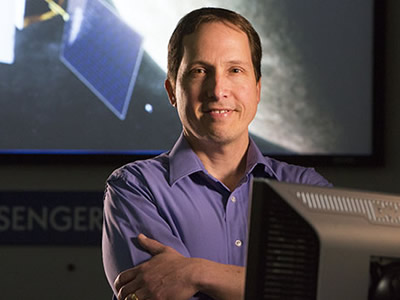



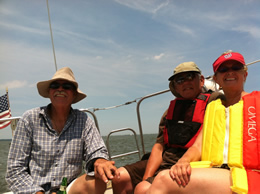
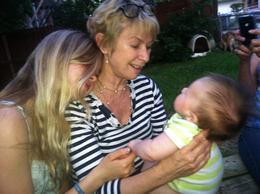
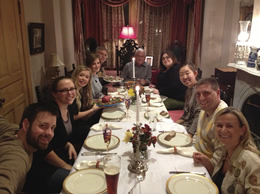


















 Whittenburg helping local children with a craft project during a youth mission trip to Belize in 2010.
Whittenburg helping local children with a craft project during a youth mission trip to Belize in 2010.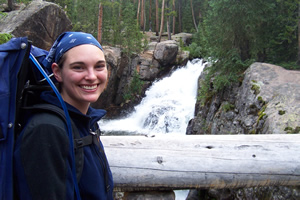






 His childhood was not filled with any specific career goal, but his attraction to space may have started then. “When I was growing up as a kid, I did live for six years in Florida because my dad worked on the Apollo program, so I saw all those missions,” he says. “Maybe that’s where I got my interest in space.”
His childhood was not filled with any specific career goal, but his attraction to space may have started then. “When I was growing up as a kid, I did live for six years in Florida because my dad worked on the Apollo program, so I saw all those missions,” he says. “Maybe that’s where I got my interest in space.” Shelton compared his work on MESSENGER to that on MSX and NEAR, saying, “It’s very similar to what I did on NEAR. It’s not so similar to MSX, although there is some overlap.” NEAR was so similar because its basic operational system was used for other subsequent missions including MESSENGER. On MSX, Shelton began on the ground software team and evolved into performing analyst work on the operations team. He notes that it was a different type of mission (Earth orbit) from MESSENGER or NEAR, so some different work was required.
Shelton compared his work on MESSENGER to that on MSX and NEAR, saying, “It’s very similar to what I did on NEAR. It’s not so similar to MSX, although there is some overlap.” NEAR was so similar because its basic operational system was used for other subsequent missions including MESSENGER. On MSX, Shelton began on the ground software team and evolved into performing analyst work on the operations team. He notes that it was a different type of mission (Earth orbit) from MESSENGER or NEAR, so some different work was required.

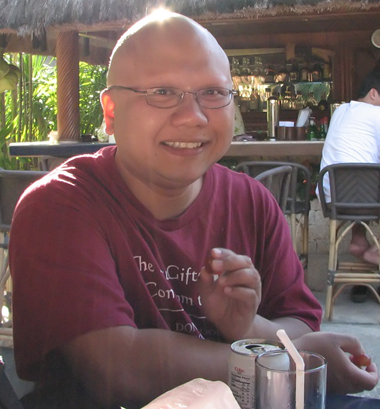
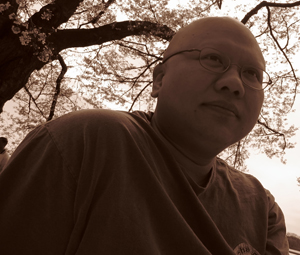
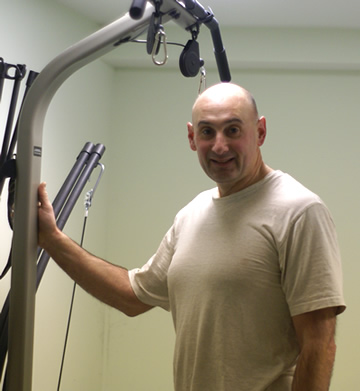

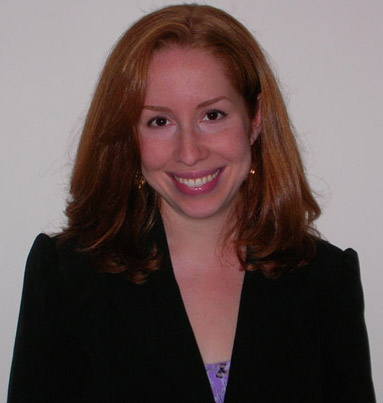
 Like the rest of the MESSENGER team, Laslo is looking forward to March of 2011, when MESSENGER enters into orbit about Mercury. "We still have two more flybys of Mercury to complete before then," she says, "and executing them successfully is crucial to our mission success; but we are starting to get into the details of our orbital planning for 2011, and that is very exciting!"
Like the rest of the MESSENGER team, Laslo is looking forward to March of 2011, when MESSENGER enters into orbit about Mercury. "We still have two more flybys of Mercury to complete before then," she says, "and executing them successfully is crucial to our mission success; but we are starting to get into the details of our orbital planning for 2011, and that is very exciting!"



 Prior to joining the Lab in 2000, Vaughan spent more than a dozen years researching, developing, and implementing navigation systems for a diverse array of spacecraft at Caltech's Jet Propulsion Laboratory in Pasadena, California. There, she worked on a number of high-profile spacecraft, including the Mars Pathfinder, Cassini, Galileo, and Voyager. She was an active participant in each stage of navigation system development, with a hand in everything from selecting data types, testing the ground tools, to flight operations.
Prior to joining the Lab in 2000, Vaughan spent more than a dozen years researching, developing, and implementing navigation systems for a diverse array of spacecraft at Caltech's Jet Propulsion Laboratory in Pasadena, California. There, she worked on a number of high-profile spacecraft, including the Mars Pathfinder, Cassini, Galileo, and Voyager. She was an active participant in each stage of navigation system development, with a hand in everything from selecting data types, testing the ground tools, to flight operations.
 I decided at a very early age that I wanted to have a role in space exploration, which was perhaps not surprising since I grew up during the height of the Apollo Moon program. Heading to JPL immediately after graduate school gave me my first taste of interplanetary missions. After my first experience with the Voyager 2 Neptune encounter, I was hooked.
I decided at a very early age that I wanted to have a role in space exploration, which was perhaps not surprising since I grew up during the height of the Apollo Moon program. Heading to JPL immediately after graduate school gave me my first taste of interplanetary missions. After my first experience with the Voyager 2 Neptune encounter, I was hooked.
 Aside from his work on MESSENGER, Peale is dabbling in other research projects, such as the dynamics and origin of extra solar planetary systems and the origin and evolution of multi-planet and multi-satellite systems where their orbital periods are in ratios of small whole numbers. Examples of the latter are the 3:4 resonance for Saturn's satellites Titan and Hyperion and the 1:2:4 resonance for Jupiter's satellites Io, Europa, and Ganymede.
Aside from his work on MESSENGER, Peale is dabbling in other research projects, such as the dynamics and origin of extra solar planetary systems and the origin and evolution of multi-planet and multi-satellite systems where their orbital periods are in ratios of small whole numbers. Examples of the latter are the 3:4 resonance for Saturn's satellites Titan and Hyperion and the 1:2:4 resonance for Jupiter's satellites Io, Europa, and Ganymede. I proposed a scheme for determining whether or not Mercury has a molten core. My task on the MESSENGER Science Team so far has been to ensure that this scheme will actually work. Radar measurements from the Earth have already suggested that the existence of a molten core in Mercury seems assured. It will be very exciting when MESSENGER verifies these numbers and determines Mercury's gravitational field to complete the full experiment. It is going to work.
I proposed a scheme for determining whether or not Mercury has a molten core. My task on the MESSENGER Science Team so far has been to ensure that this scheme will actually work. Radar measurements from the Earth have already suggested that the existence of a molten core in Mercury seems assured. It will be very exciting when MESSENGER verifies these numbers and determines Mercury's gravitational field to complete the full experiment. It is going to work. “It’s my big passion. I started ref’ing
football back in 1990 - little league youth
ball, then high school ball — and now I’ve been fortunate enough
to work college football,” he says. While he concedes that he’s
not always the most popular person, Hill thoroughly enjoys his side job
nevertheless.
“It’s my big passion. I started ref’ing
football back in 1990 - little league youth
ball, then high school ball — and now I’ve been fortunate enough
to work college football,” he says. While he concedes that he’s
not always the most popular person, Hill thoroughly enjoys his side job
nevertheless. I was the MESSENGER Flight Software Lead from the mission's early design stage through launch. During the development, integration and launch preparation of the spacecraft, the Flight Software Lead role allowed me to work closely with many of the talented people working the mission. The Flight Software interfaces with nearly all of the other subsystems on the spacecraft in some way. So leading that effort exposed me to many of these systems.
I was the MESSENGER Flight Software Lead from the mission's early design stage through launch. During the development, integration and launch preparation of the spacecraft, the Flight Software Lead role allowed me to work closely with many of the talented people working the mission. The Flight Software interfaces with nearly all of the other subsystems on the spacecraft in some way. So leading that effort exposed me to many of these systems. About 30 years ago in early1976 the Mariner 10 science team had a meeting at JPL to discuss the results of the Mariner 10 flybys of Mercury, and to begin initial plans for a Mercury orbiter. Mariner 10 was a reconnaissance mission intended to explore Mercury for the first time and gather enough information on this unknown planet to prepare for an orbiter mission to explore the planet in depth. We knew there were trajectories by Venus and Mercury that would slow the spacecraft enough to put it in orbit with a conventional retro-rocket. At that time I never dreamed I would have to wait 32 years before I would next lay eyes on spacecraft images of the planet, or 35 years before I would see a spacecraft orbit Mercury.
About 30 years ago in early1976 the Mariner 10 science team had a meeting at JPL to discuss the results of the Mariner 10 flybys of Mercury, and to begin initial plans for a Mercury orbiter. Mariner 10 was a reconnaissance mission intended to explore Mercury for the first time and gather enough information on this unknown planet to prepare for an orbiter mission to explore the planet in depth. We knew there were trajectories by Venus and Mercury that would slow the spacecraft enough to put it in orbit with a conventional retro-rocket. At that time I never dreamed I would have to wait 32 years before I would next lay eyes on spacecraft images of the planet, or 35 years before I would see a spacecraft orbit Mercury.

